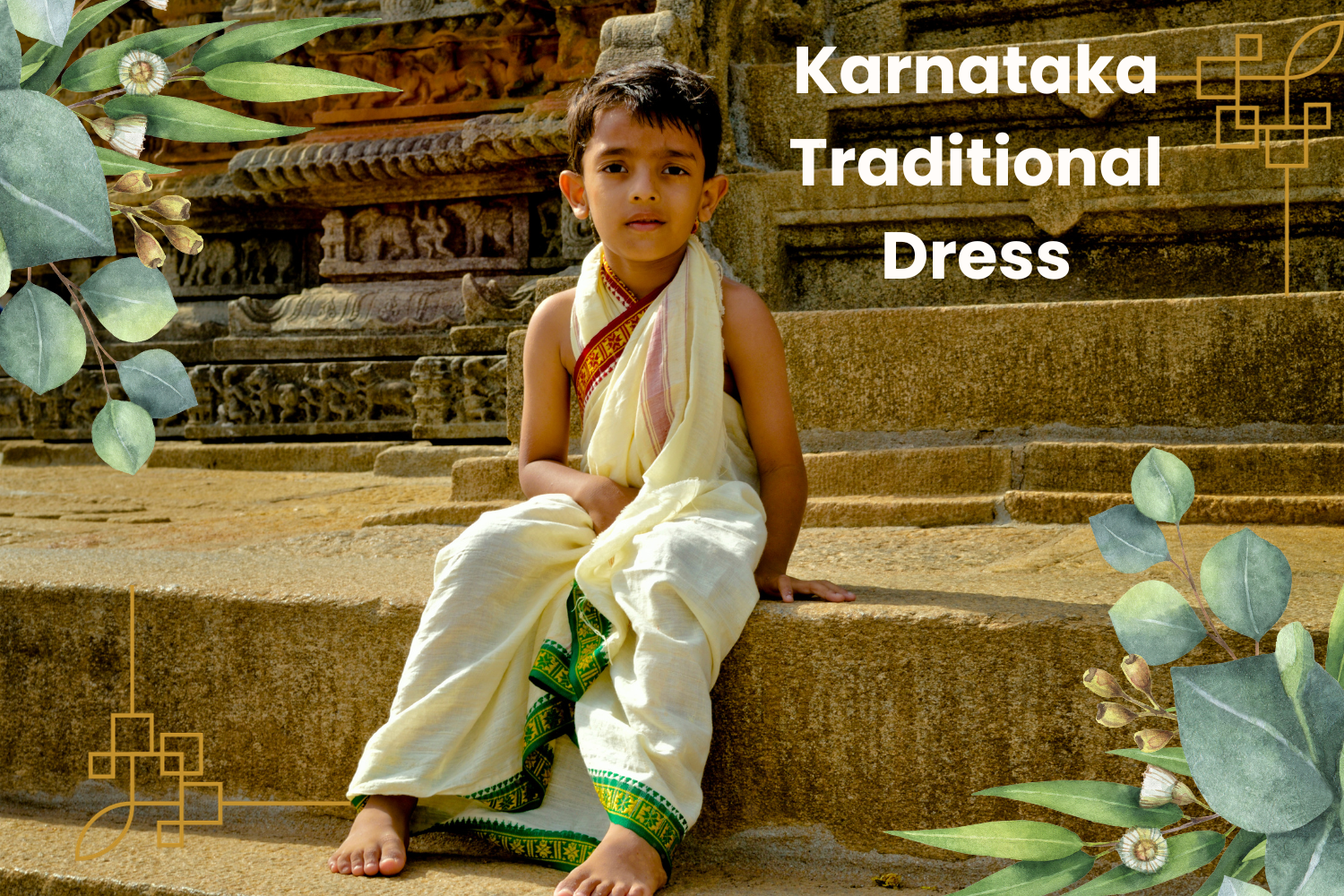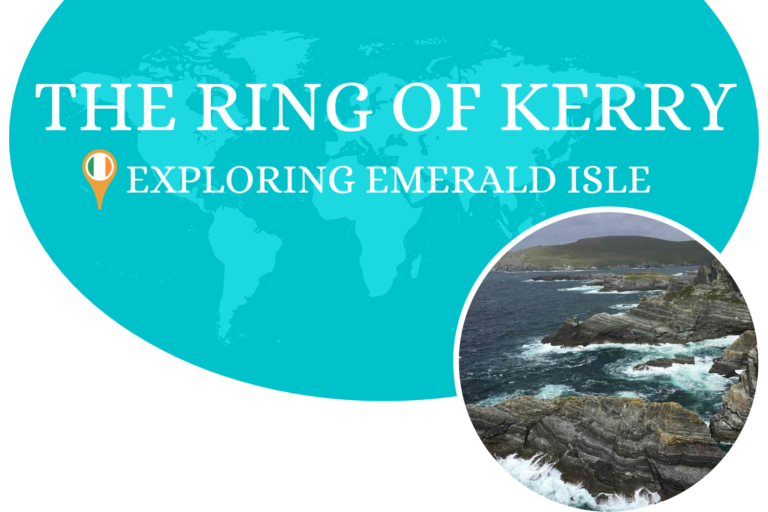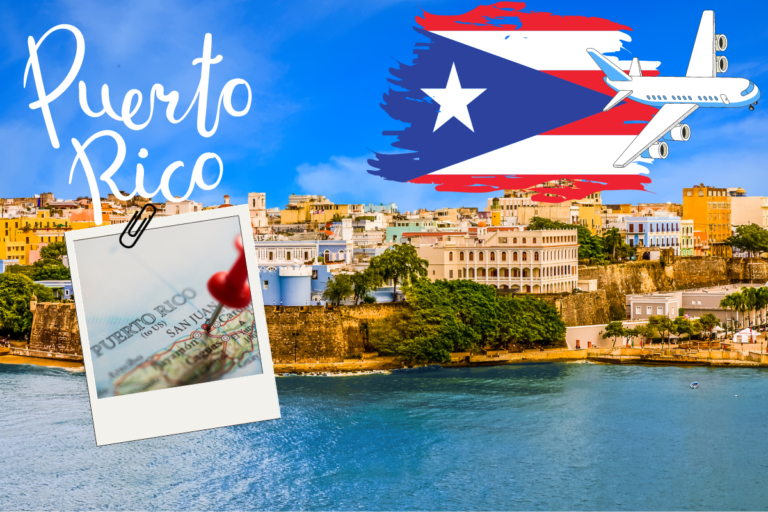31 Districts: Karnataka Traditional Dress Code Revealed
Karnataka, a vibrant state in India, boasts a rich history and diverse cultures. People in Karnataka express their identity through their distinct Karnataka traditional dress.
The clothing reflects the dynamic spirit and unique heritage of Karnataka. Bright colors, and intricate designs, each garment tells a story.
Karnataka’s traditional dress is a living testament to the state’s lively culture and the pride of its people.
In this blog, we shall explore the timeless elegance and fascinating stories behind the garments that define the unique fashion identity of Karnataka. A journey that promises to showcase the essence of tradition and style in every fold and drape.
1. Bagalkote
Bagalkote district, steeped in history and cultural significance, is located in Northern Karnataka.
The district boasts an illustrious past, with remnants of ancient civilizations and a rich heritage dating back to the Chalukya dynasty.
The serene landscapes of Bagalkote are dotted with historical landmarks, ancient temples, and picturesque ruins, reflecting the area’s deep-rooted cultural legacy.
Traditional Dress of Women in Bagalkote
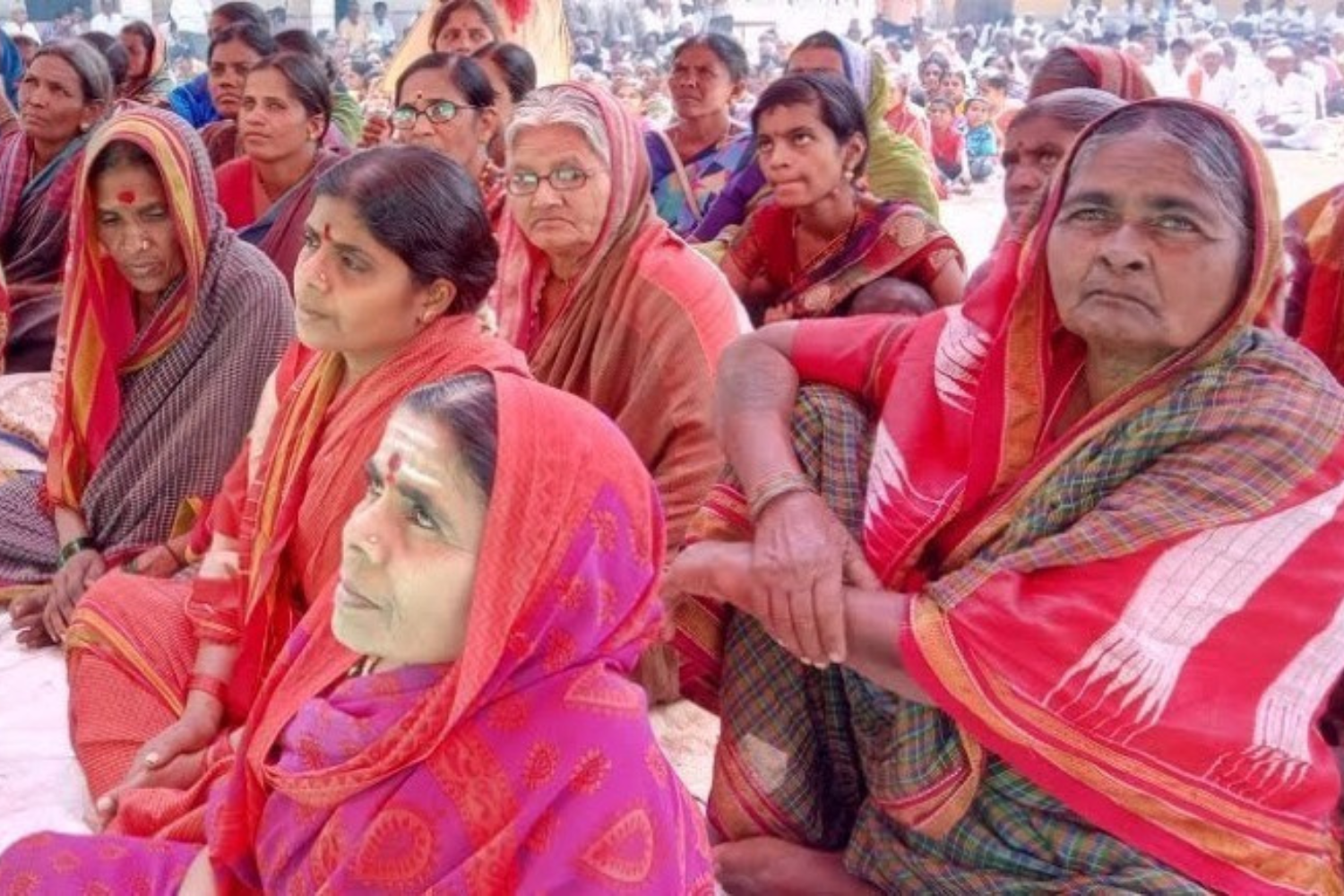
In Bagalkote, women don the captivating Ilkal saree as an integral part of their Karnataka traditional dress. Its unique pallu designs and vibrant colors, adorned with intricately woven patterns, characterize the Ilkal saree.
These sarees often showcase traditional motifs, such as peacocks, temple designs, and floral patterns, adding a touch of timeless elegance. Paired with traditional jewelry like the Choker necklace and Kolusu anklets, the women of Bagalkote exude grace and cultural pride in their attire.
Traditional Dress of Men in Bagalkote
The traditional dress of men in Bagalkote is the classic dhoti and panche, paired with a simple shirt or Kurta. The dhoti, often worn in shades of white or cream, is draped in a way that exemplifies the traditional charm of the region.
Men might also wear an Angavastram, a piece of cloth draped over the shoulders, which adds an extra layer of cultural significance to their attire.
The men’s dressing style in Bagalkote epitomizes the simplicity and timeless appeal of traditional clothing.
Bagalkote district weaves a cultural tapestry that beautifully interlaces the legacy of the past with the vibrancy of the present.
Through their traditional dress, the people of Bagalkote showcase their reverence for tradition and their deep connection to the roots of Karnataka’s cultural heritage. It carries forward the essence of Bagalkote’s cultural significance for generations to come.
2. Bengaluru Urban
The Bengaluru Urban District – home to the bustling metropolis of Bengaluru, is a vibrant blend of modernity and tradition.
The district serves as the state’s capital and is renowned for its technological advancements, cosmopolitan atmosphere, and rich cultural heritage.
Known as the “Silicon Valley of India”, Bengaluru is a place where many different kinds of people live, and diversity is like a special pattern made up of their customs and traditions. You can see this unique blend in the way people dress here.
The clothes they wear tell a story about the customs and traditions that make Bengaluru special.
Traditional Dress of Women in Bengaluru Urban
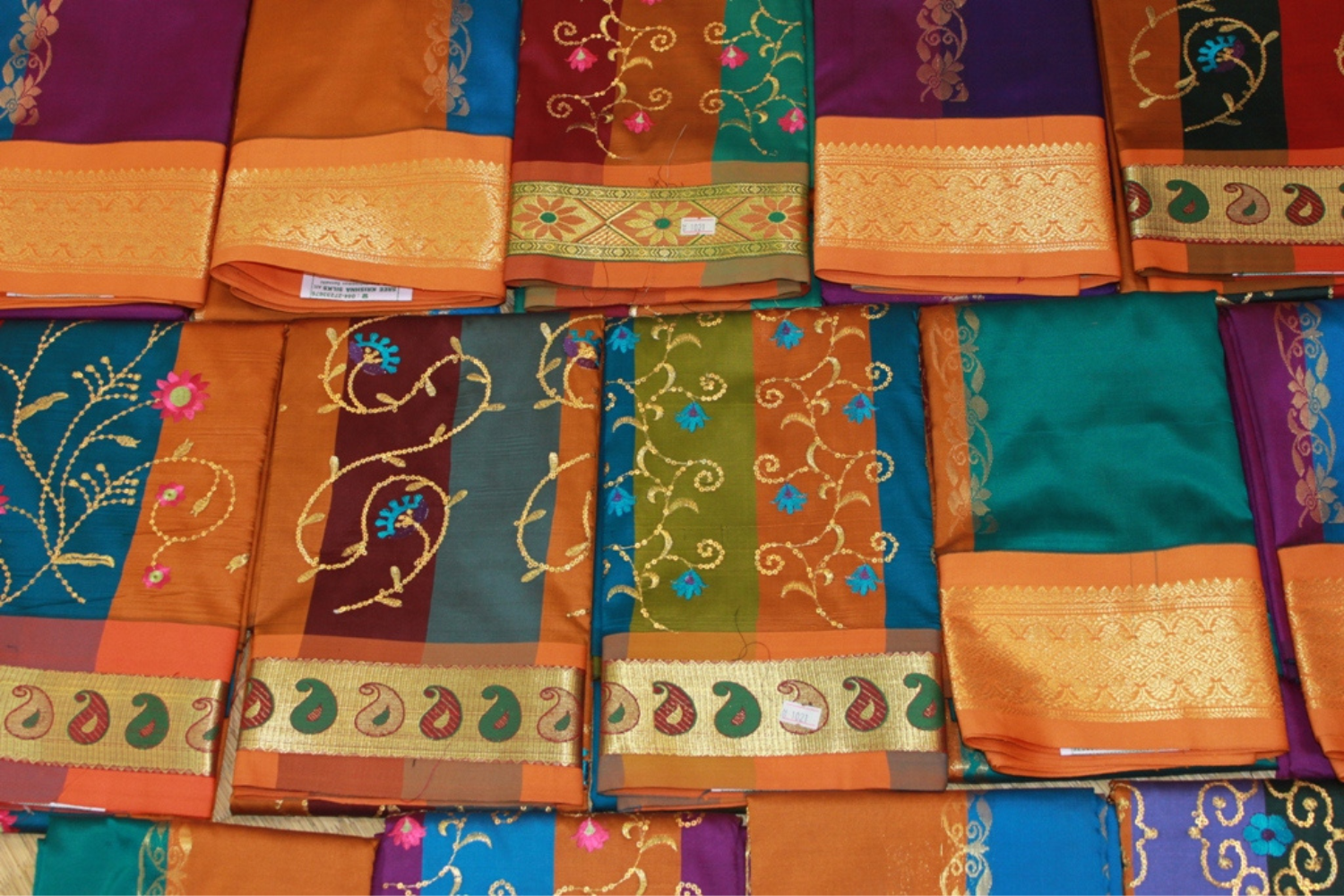
The traditional dress of women in the Bengaluru Urban District is a delightful mix of traditional and contemporary elements.
While sarees, especially the elegant Mysore silk sarees and Kanchipuram sarees, hold a special place in cultural celebrations and formal occasions. Modern-day women also embrace a wide range of clothing choices, including salwar kameez, lehengas, western, and fusion wear.
The sarees, adorned with intricate designs and patterns, evoke a sense of grace and poise, reflecting the city’s essence of elegance.
Traditional Dress of Men in Bengaluru Urban
For men in the Bengaluru Urban District, traditional attire primarily consists of dhotis and panche. They pair it with simple yet stylish Kurtas or shirts.
The state’s cultural roots are symbolized by the dhotis. People often wear them during religious ceremonies, weddings, and festivals.
However, in the urban landscape of Bengaluru, men commonly opt for Western wear, such as shirts, trousers, and suits, especially in professional settings.
Bengaluru Urban District, as the cosmopolitan heart of Karnataka. It showcases a unique blend of tradition and modernity in its people’s attire.
During cultural events, people continue to cherish traditional sarees and dhotis, but the city’s dynamic and diverse population has embraced a fusion of clothing choices. The Karnataka traditional dress in the Bengaluru Urban District represents the spirit of an ever-evolving metropolis that cherishes its cultural heritage while celebrating progress and diversity.
3. Bengaluru Rural
Bengaluru Rural district, located in the southern part of Karnataka, surrounds the bustling metropolis of Bengaluru, the state’s capital city.
Despite its proximity to the urban hub, the district retains its rural charm and cultural significance.
Nestled amidst lush greenery and serene landscapes, Bengaluru Rural has a unique identity that reflects a harmonious blend of tradition and modernity.
Traditional Dress of Women in Bengaluru Rural

In Bengaluru Rural, women prefer to adorn the classic and timeless attire of sarees. These sarees come in a myriad of fabrics, colors, and designs, catering to the diverse tastes of the local women.
While many opt for elegant silk sarees that exude a sense of regality, others cherish the simplicity of cotton sarees, perfect for the region’s warm climate.
The women of Bengaluru Rural take pride in their traditional sarees. They drape with grace and sophistication on various occasions, be it family gatherings, festivals, or weddings.
They often embellish their sarees with traditional jewelry like necklaces, and earrings, adding a touch of elegance to their overall appearance.
Traditional Dress of Men in Bengaluru Rural
For men in Bengaluru Rural, the traditional attire primarily consists of dhotis and panche paired with shirts or Kurtas. This traditional outfit is not only comfortable but also adds a touch of sophistication to the overall appearance of men in the region.
In formal or celebratory settings, men may also wear a traditional angavastram or a stole draped over their shoulders, enhancing their traditional attire further.
Bengaluru Rural, with its charming blend of rural landscapes and cultural heritage, takes pride in its traditional attire.
The sarees and dhotis worn by the women and men of this district symbolize the continuity of age-old traditions in the face of modernization.
As Bengaluru Rural retains its cultural identity, its traditional dress serves as a beautiful reminder of the district’s rich heritage and the timeless elegance that resonates with the people who call this place their home.
4. Belagavi
Belagavi, a district located in North Karnataka, is a region of great cultural significance in the state.
The district’s name is derived from “Bela” (white) and “Gavi” (rock), aptly describing its historical landmarks and scenic beauty.
Its magnificent architecture and diverse traditions evidence Belagavi’s rich history, tracing back to medieval times.
Traditional Dress of Women in Belagavi
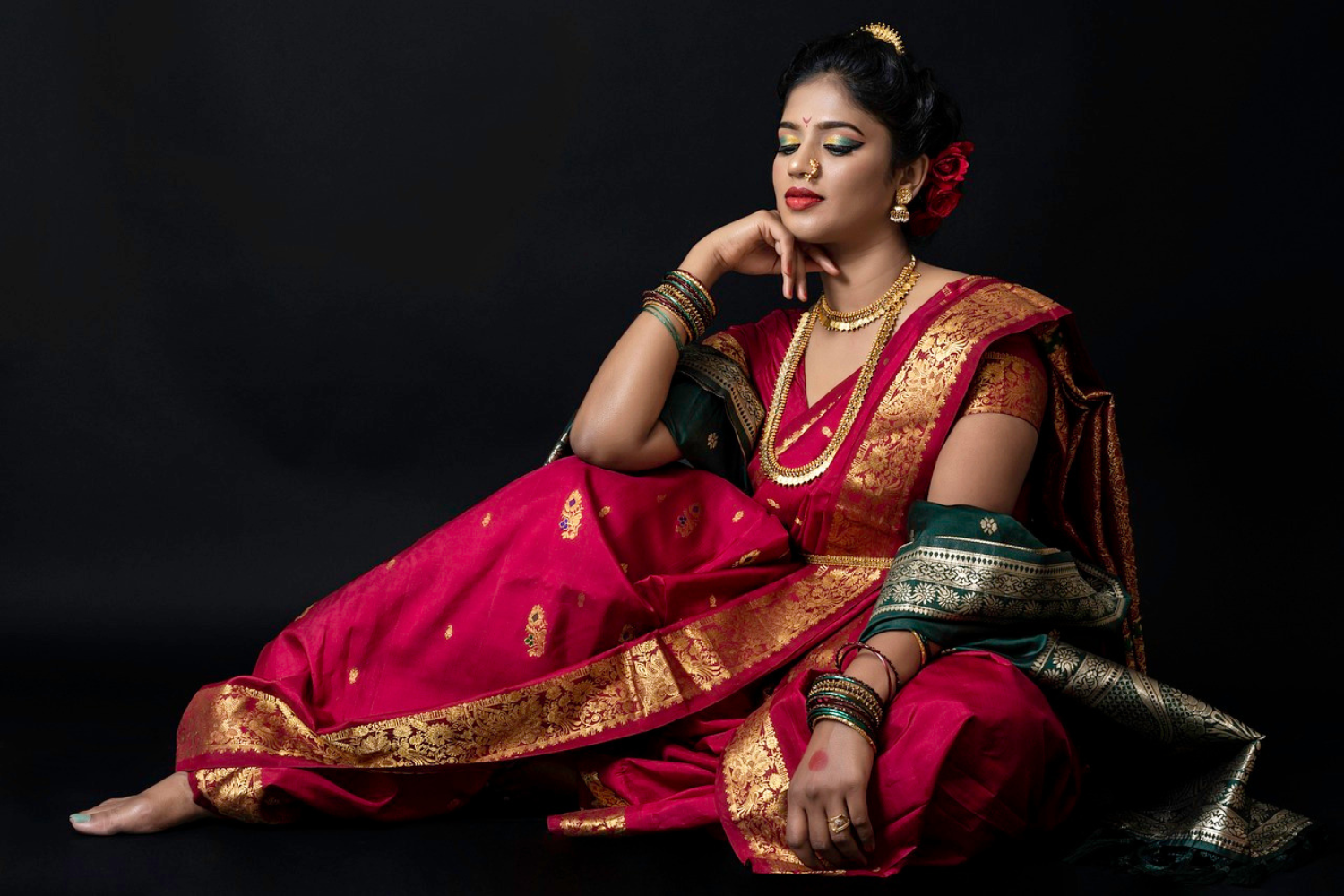
Women in Belagavi wear the traditional Navari saree, characterized by its distinctive draping style.
The Navari saree involves intricate pleats and wrapping the pallu around the body. Usually made from cotton or silk fabric. The Navari saree is adorned with beautiful designs and vibrant colors.
The attire reflects the fusion of Kannada and Maharashtrian culture, as Belagavi shares its border with Maharashtra.
Women complement their Navari saree with traditional jewelry, including the Kolhapuri Saaj, a striking neckpiece made of gold beads, and the Nath, a nose ring, both of which add an elegant touch to their overall look.
Traditional Dress of Men in Belagavi
For men in the Belagavi district, the traditional attire is the dhoti and panche.
The dhoti is wrapped around the waist and legs in a manner that allows free movement and comfort. It is usually paired with a Kurta, completing the classic traditional look.
On special occasions and festivals, men may also wear an Angavastram. It is a piece of cloth draped over their shoulders, adding a touch of refinement and formality to their attire.
This traditional dress represents a deep-rooted cultural identity that is cherished and preserved by the people of the district.
The traditional dress of the people of the Belagavi district reflects a harmonious blend of regional cultures, exuding elegance and pride in its unique drapes and designs.
Traditional attires not only represent the rich heritage of Belagavi but also epitomize the shared cultural legacy of Karnataka and its neighboring regions.
Through the traditional attire of Belagavi, the district’s cultural significance is proudly displayed, standing as a testament to the enduring beauty of Karnataka’s sartorial heritage.
5. Ballari
Nestled in the northern region of Karnataka, the Ballari district stands as a testament to the state’s rich history and cultural significance.
Once a flourishing center of trade and commerce, Ballari has witnessed the rise and fall of empires, leaving behind a legacy that still echoes in the hearts of its people.
The traditional dress of the people is a vibrant reflection of their heritage. The attire, adorned with unique patterns and colors, tells the story of Ballari’s cultural journey through the ages.
Traditional Dress of Women in Ballari
In Ballari district, women’s traditional attire exudes elegance and grace. The cornerstone of their dressing style is sarees, which come in various fabrics and designs.
The favored choice is often the richly woven cotton sarees with bold, contrasting borders. It adds a touch of vibrancy to the ensemble.
Women drape the sarees in the distinctive Karnataka style, allowing the pallu to fall gracefully over the shoulder.
Local artisans often embellish these sarees with intricate zari work or artistic motifs, showcasing their craftsmanship.
Traditional Dress of Men in Ballari
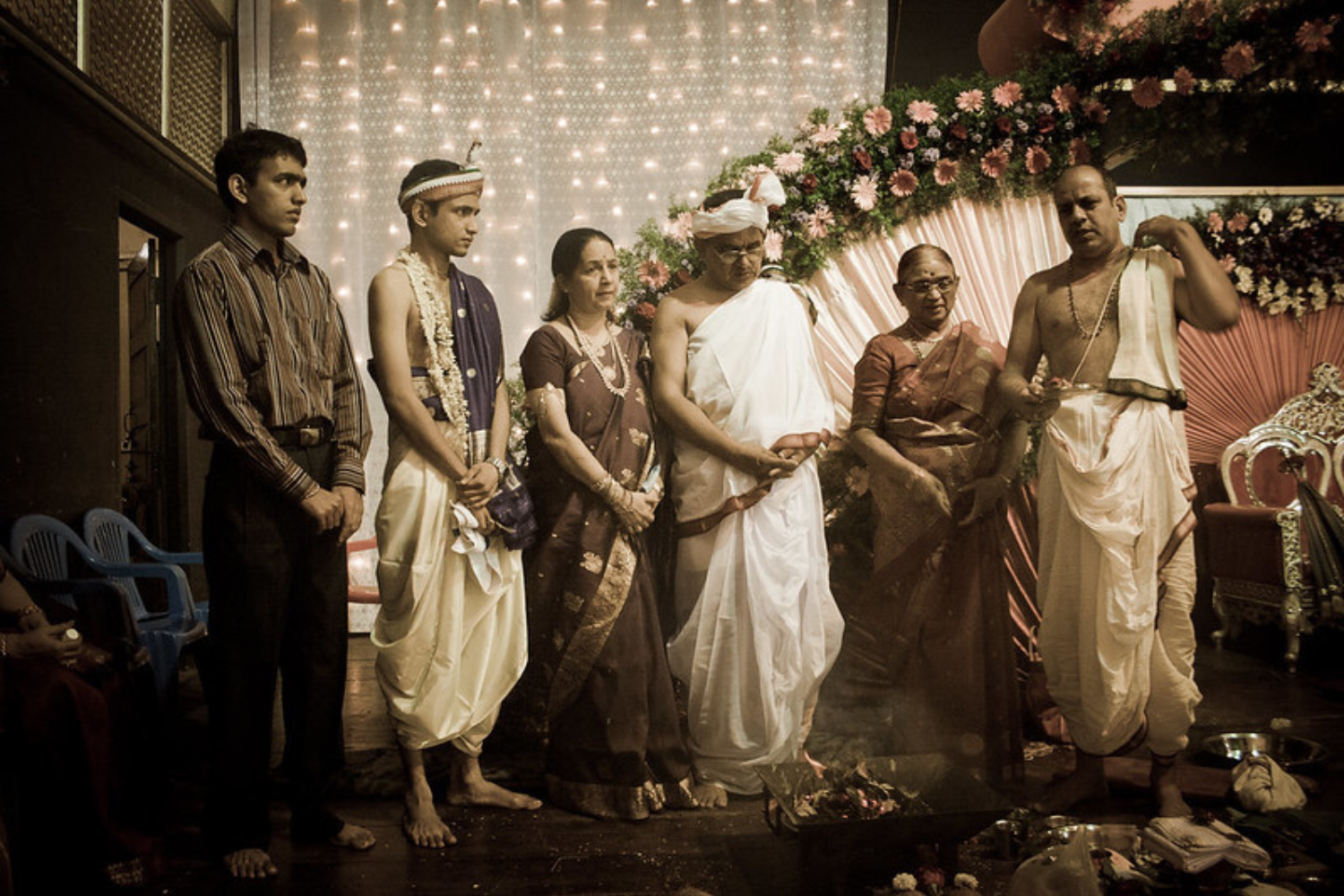
Image Credits Wolfgang Maehr via Flickr
Men in the Ballari district proudly wear the traditional dhoti and panche. This attire reflects simplicity, comfort, and a connection to their cultural roots.
The dhoti is paired with a Kurta, which can either be plain or adorned with subtle embellishments.
Moreover, on special occasions, men don the angavastram, a colorful piece of cloth gracefully draped over the shoulders.
The traditional dress of the Ballari district establishes a deeper connection to the region’s history and heritage. The sarees and dhotis worn by the people of Ballari are a living testimony to the cultural splendor that has evolved over the years.
Preserving the essence of Karnataka’s timeless traditions, Ballari’s traditional attire reflects the pride and respect held by its people for their past. They continue to cherish it as a symbol of elegance and grace.
6. Bidar
Bidar district in northern Karnataka holds immense significance as the ancient capital of the Bahmani Sultanate, making it a hub of architectural marvels and artistic brilliance.
The district’s traditional attire beautifully reflects its cultural legacy, adding a touch of elegance to the lives of its people.
Each garment tells a story, connecting the present with the illustrious past. Making Bidar’s traditional dress an enduring symbol of the district’s rich heritage and cultural pride.
Traditional Dress of Women in Bidar
Renowned for its Bidriware – a metal handicraft, the Bidar district beautifully adorns the traditional sarees worn by women with this form of metal artistry.
The women of Bidar gracefully drape the Bidriware-embroidered sarees, characterized by intricate silver or gold threadwork. It intricately weaves timeless patterns on the fabric.
The captivating craftsmanship adds a touch of regal charm to their attire. Making the Karnataka traditional dress of Bidar a symbol of artistic excellence and cultural pride.
Traditional Dress of Men in Bidar
The men of the Bidar district embrace the traditional elegance of dhotis and panche, wrapping them around their waist and legs with finesse.
Paired with a simple yet dignified Kurta or shirt, the traditional attire embodies the district’s cultural values of simplicity and sophistication.
Additionally, men often adorn themselves with traditional jewelry like the Chandrakala, an intricately designed crescent-shaped ornament worn around the neck, enhancing their charm and cultural identity.
The Karnataka traditional dress of Bidar district stands as a testament to the region’s rich heritage and artistic brilliance.
7. Vijayapura
Vijayapura district in northern Karnataka holds a significant place in the state’s history and cultural heritage.
Formerly known as Bijapur, this district bears tales of valor and architectural marvels, making it a testimony to the rich Deccan heritage.
Traditional Dress of Women in Vijayapura
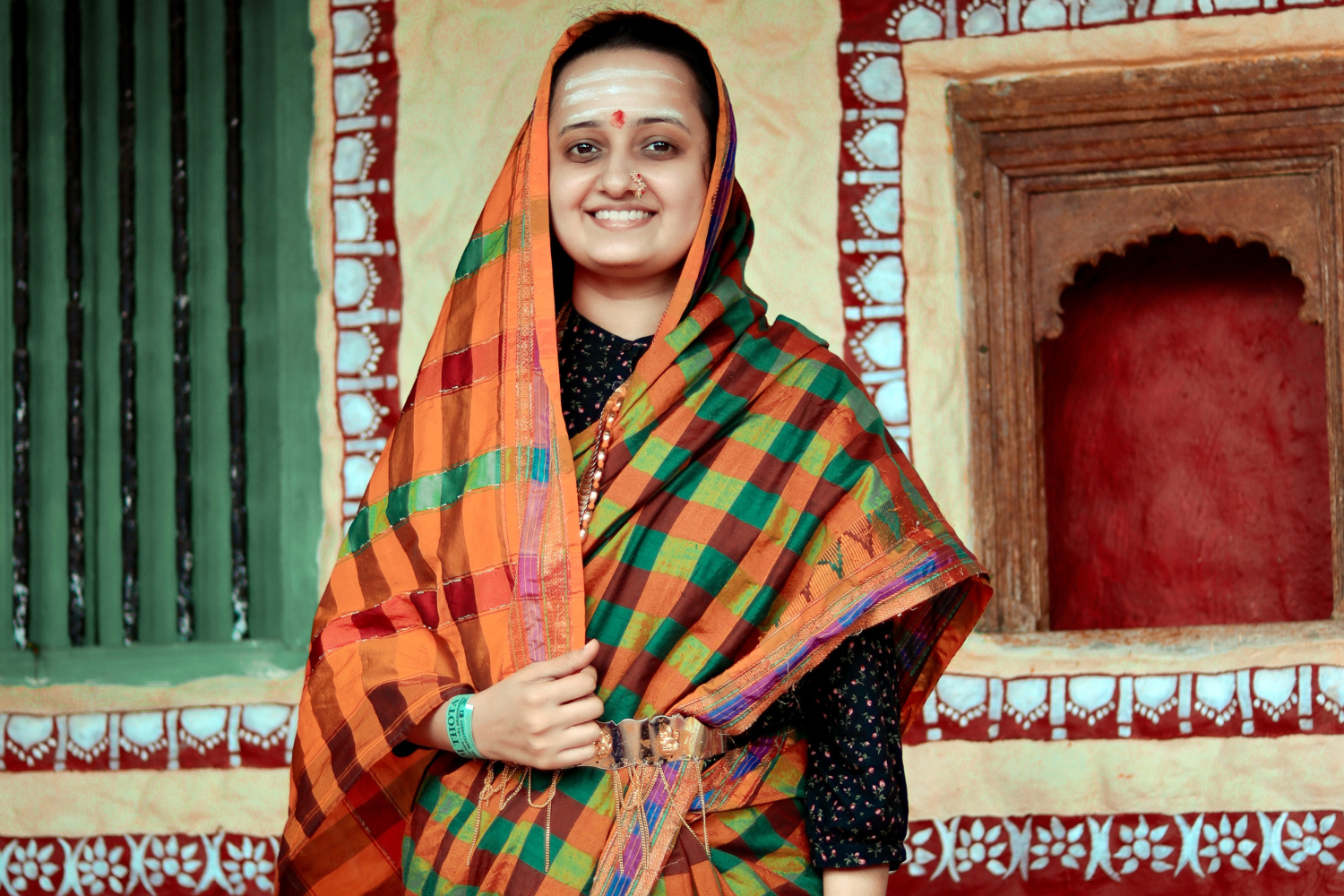
In Vijayapura, Women often don the Ilkal saree, a symbol of cultural heritage and artistic finesse. These sarees are characterized by their unique weave patterns and contrasting borders, adorned with vibrant hues that pay homage to the region’s artistic heritage.
The Ilkal saree, gracefully draped, accentuates the beauty of the women. It is often complemented with traditional jewelry like the Chandrahaar necklace, the Belada haar, and the Lakshmi haram.
Traditional Dress of Men in Vijayapura
The men of Vijayapura district proudly embrace the timeless elegance of the traditional dhoti and panche. Paired with a classic Kurta, the attire showcases simplicity and traditional values.
The dhoti is often complemented with a Kachche Panche, which features a distinctive tuck at the waist, adding a touch of sophistication.
Completing the ensemble, men also wear a traditional Angavastram or shawl draped over their shoulders, reflecting a sense of respect and honor.
Vijayapura district, with its rich history and cultural heritage, showcases the elegance and regal charm of Karnataka traditional dress.
8. Chamarajanagara
Chamarajanagara district in South Karnataka is known for its picturesque landscapes, ancient temples, and vibrant cultural heritage.
The district derives its name from Sri Chamaraja Wodeyar, a revered ruler of the erstwhile Mysore Kingdom.
Over the years, Chamarajanagara has preserved its traditional customs and festivals, reflecting the rich history of the region.
Traditional Dress of Women in Chamarajanagara
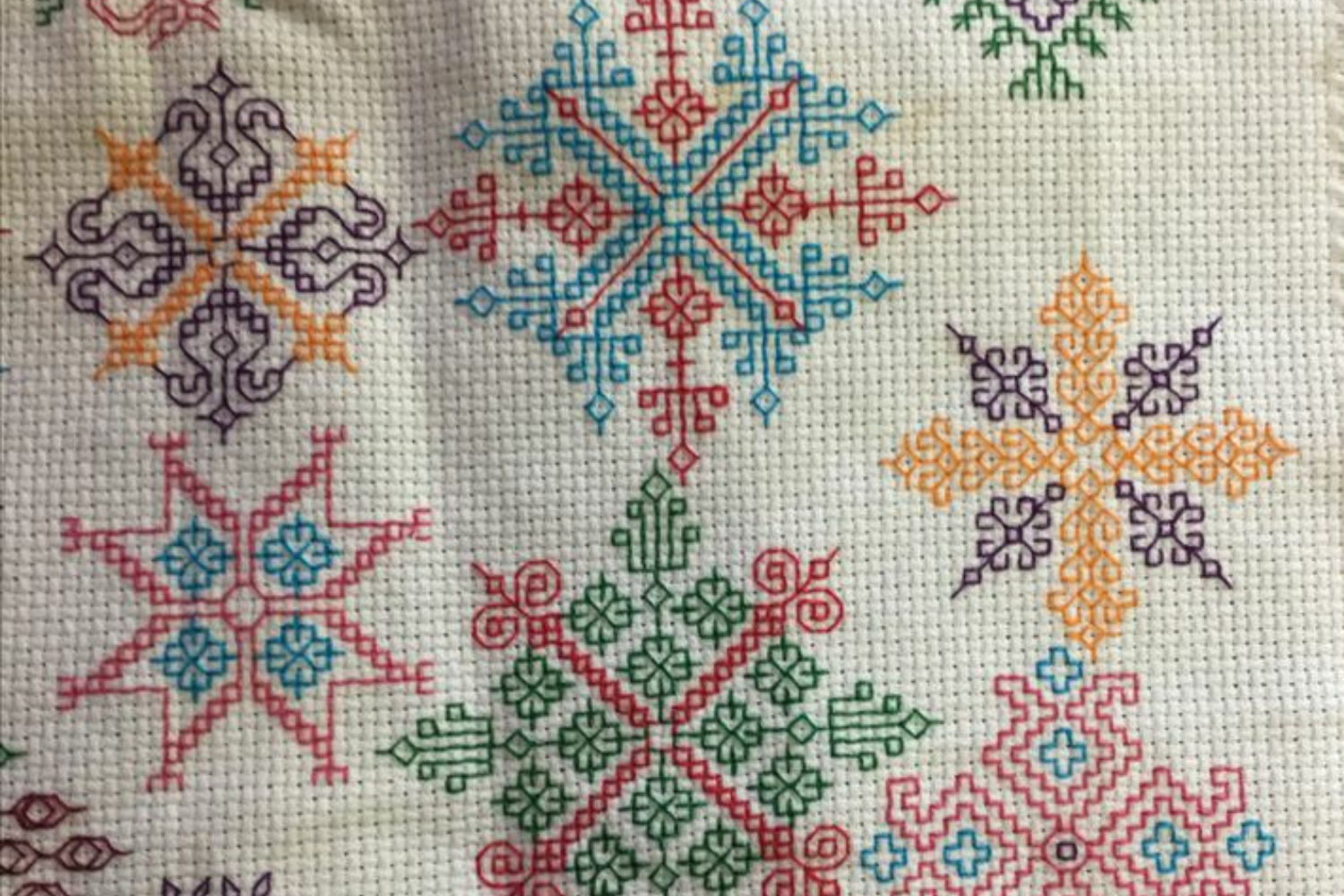
In Chamarajanagara district, women adorn the graceful Kasuti embroidered sarees, which are a true symbol of the region’s cultural heritage.
Kasuti, a traditional form of embroidery, embellishes the sarees with intricate geometric patterns and motifs. The vibrant colors and meticulous craftsmanship of Kasuti embroidery reflect the artistic finesse of the local women.
During festivals, weddings, and other auspicious occasions, people often wear these sarees, holding a special place in their hearts as they connect to their roots and traditions.
Traditional Dress of men in Chamarajanagara
Men in the Chamarajanagara district primarily wear dhotis and panche, which they pair with a simple shirt or Kurta as part of the Karnataka traditional dress.
The simplicity of the attire reflects the district’s rural lifestyle and its commitment to preserving traditional values.
Chamarajanagara district is a treasure trove of cultural richness. The traditional dress of this district remains an emblem of cultural pride, reflecting the unwavering spirit of its people and their enduring love for their heritage.
9. Chikkaballapura
Chikkaballapura is a district in Karnataka that holds a treasure trove of cultural heritage.
Renowned for its ancient temples, stunning architecture, and distinct way of life, this region is rich in history and tradition.
Chikkaballapura, located amidst the lush green landscapes and picturesque hills is a true visual treat. Let’s find out the traditional attire that the women and men of this district adorn.
Traditional Dress of Women in Chikkaballapura
The women of Chikkaballapura exude timeless elegance with their traditional attire – the graceful silk saree.
Embodying the essence of Karnataka’s regal heritage, local weavers skillfully weave these sarees with intricate designs and embellish them with zari work, displaying masterful artistry.
The Chikkaballapura women adorn themselves with traditional jewelry like temple-inspired necklaces, jhumkas, and bangles.
The silk saree, with its flowing grace, symbolizes the enduring beauty and poise of Chikkaballapura’s women.
Traditional Dress of Men in Chikkaballapura
In Chikkaballapura, men gracefully embrace the cultural legacy of the region by donning the traditional attire of dhotis and panche paired with a well-tailored Kurta.
The dhoti, represents simplicity and dignity, reflecting the traditional way of life in the district.
Men often complete their look with an Angavastram, which not only adds to their charm but also serves as a practical garment in the region’s temperate climate.
For the people of Chikkaballapura, their traditional dress is not just an outfit. It is an expression of identity and a testament to the vibrant cultural legacy that breathes life into the very heart of Karnataka.
10. Chikkamagaluru
Amidst the picturesque Western Ghats, Chikkamagaluru district is a verdant paradise renowned for its lush coffee plantations and serene landscapes.
This district holds a special place in Karnataka’s cultural tapestry, steeped in traditions and folklore that have been passed down through generations.
Traditional Dress of Women in Chikkamagaluru
In the Chikkamagaluru district, the traditional dress of women reflects the region’s natural beauty and the simplicity of its people.
Women commonly adorn the graceful nine-yard saree, known as the “Chikkamagaluru saree” or “Mallige saree.” This saree is a symbol of elegance, typically woven with fine cotton or silk fabric adorned with floral motifs or subtle patterns.
The saree is draped in a unique style that showcases the artistry of local weavers, creating a distinctive look that resonates with the district’s culture.
Traditional Dress of Men in Chikkamagaluru
For men in Chikkamagaluru, the traditional attire revolves around the classic dhoti and panche. It is complemented by a simple yet stylish Kurta.
The dhoti, made from cotton or silk, is often worn in a folded and pleated manner, adding a touch of sophistication to the overall appearance.
The attire is completed with a headgear called “Mundu,” which adds a traditional charm to their ensemble.
This age-old attire reflects the region’s agricultural heritage and embodies the time-honored values of simplicity and grace.
Chikkamagaluru district, with its serene beauty and cultural significance, holds a cherished place in the hearts of the people of Karnataka. The traditional dress of the people of Chikkamagaluru reflects the region’s artistic finesse and cultural roots.
Through these age-old garments, the people of Chikkamagaluru continue to celebrate their identity and heritage, passing on the legacy to future generations with pride and admiration.
11. Chitradurga
Chitradurga district is a captivating region known for its rich cultural heritage and historical significance.
The district derives its name from Chitrakaldurga, an ancient fortress that stands as a testament to its illustrious past.
Chitradurga’s cultural tapestry is intricately woven with tales of valor, bravery, and artistic finesse that continue to influence its traditional attire.
Traditional Dress of Women in Chitradurga
In Chitradurga, women adorn the exquisite Kasuti embroidered sarees, which are synonymous with the district’s artistic brilliance.
Kasuti, a form of needlework, embellishes the sarees with intricate patterns inspired by the local flora and fauna.
The sarees are known for their vibrant colors and elegant designs, truly reflecting the cultural significance of Chitradurga. When draped gracefully, the Kasuti sarees exude a sense of pride and heritage, symbolizing the indomitable spirit of the people.
Traditional Dress of Men in Chitradurga
For men in Chitradurga, the traditional attire comprises dhotis and panche, a rectangular piece of cloth draped around the waist, paired with Kurtas.
This simplistic yet dignified attire reflects the district’s cultural ethos of humility and authenticity.
During traditional festivals and ceremonies, men often complement their outfits with a shawl or angavastram, thereby adding a touch of refinement and elegance. Additionally, the shawl or angavastram enhances their attire, elevating their overall appearance to a more sophisticated level.
Chitradurga district stands as a living testimony to Karnataka’s rich cultural heritage. The traditional attire, adorned by both men and women, showcases the artistic finesse and historical significance of the region.
Additionally, it serves as a timeless reminder of the cultural heritage and craftsmanship that has been cherished for generations.
12. Dakshina Kannada
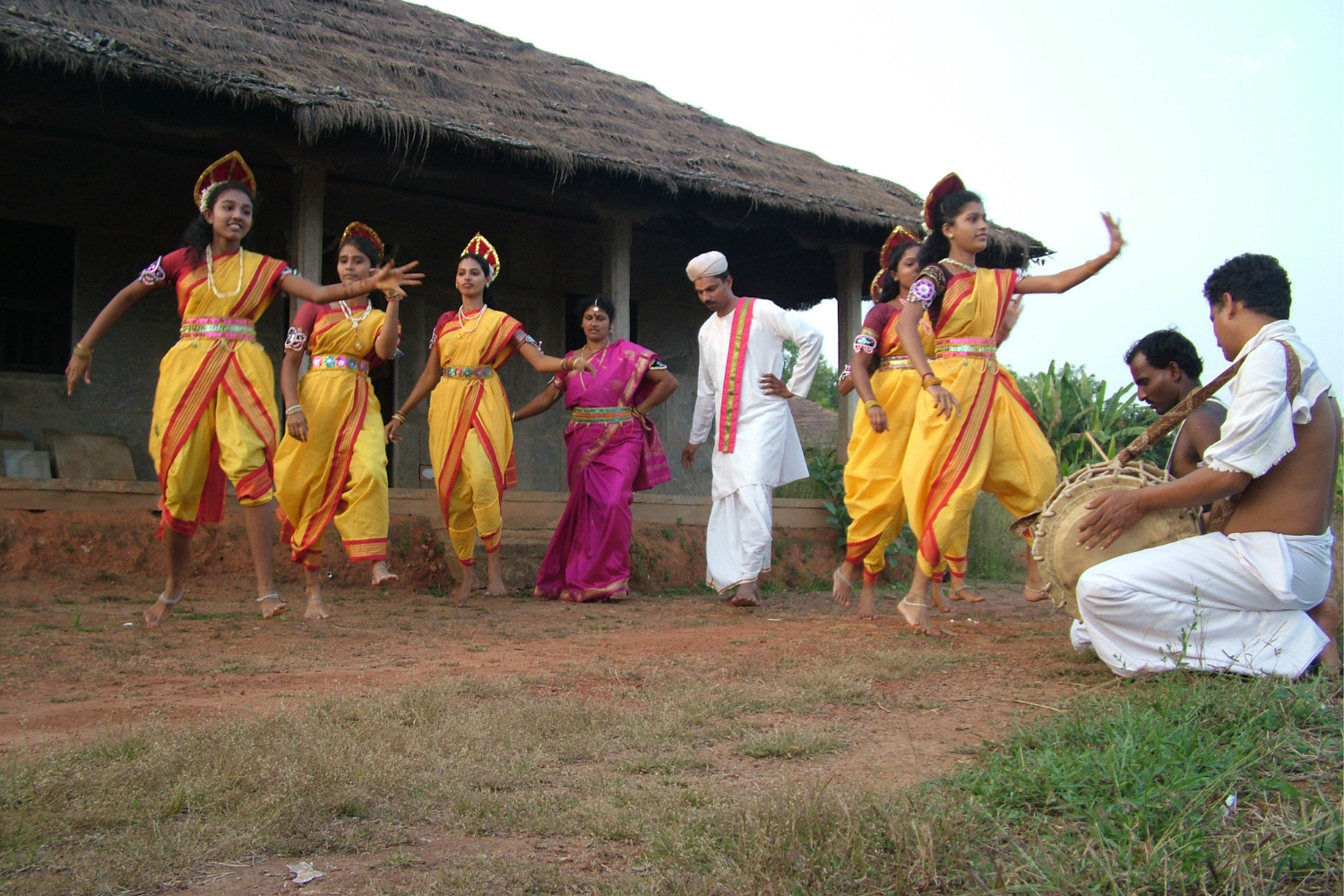
Along the scenic coastline of Karnataka, Dakshina Kannada district exudes a unique blend of cultures that has left a profound impact on its traditional attire.
The district’s rich history, shaped by various influences, is beautifully reflected in the clothing worn by its people.
Traditional Dress of Women in Dakshina Kannada
The Mangalore silk saree takes center stage in the wardrobes of Dakshina Kannada’s women.
Boasting a lustrous texture and is adorned with vibrant colors and intricate zari borders. These sarees have sea-inspired motifs like waves, fish, and conch shells woven into them, making them truly one-of-a-kind and reflecting the influence of coastal life.
Women pair the Mangalore silk saree with traditional jewelry like the Kasina Sara (coin necklace), the Padda Haar (long necklace), and the unique Nethi Chutti (headpiece). It enhances the overall grace and cultural significance of the attire.
During festive celebrations or family gatherings, the Mangalore silk saree remains an emblem of elegance and coastal charm in Dakshina Kannada.
Traditional Dress of Men in Dakshina Kannada
Men in Dakshina Kannada embrace a traditional attire that exudes simplicity and cultural pride. The dhoti, is a quintessential choice for men’s clothing. The dhotis in Dakshina Kannada are often white or off-white, reflecting a sense of purity and humility.
Adding a coastal touch, men complement their dhotis with a unique angavastram or angiya, a piece of cloth worn over the shoulders. The angavastram is often adorned with stripes or patterns, representing the coastal waves or the region’s lush greenery.
The attire is completed with a Kurta or a simple shirt, keeping the look understated yet traditional.
In Dakshina Kannada, the traditional dress of both women and men celebrates the region’s cultural heritage and its deep-rooted connection to the coastal landscapes.
The traditional dress of the people of Dakshina Kannada stands as a timeless reminder of the district’s diverse cultural tapestry, creating a rich visual narrative of its heritage that continues to thrive with pride.
13. Davanagere
The Davanagere district is renowned for its historical significance and thriving cultural heritage.
Home to a bustling city and rural landscapes, the district exhibits a harmonious blend of tradition and modernity.
The people of Davanagere take immense pride in their vibrant festivals, exquisite cuisine, and, of course, their traditional attire that showcases the region’s unique identity.
Traditional Dress of Women in Davanagere
In the Davanagere district, women adorn the elegant Davani sarees, which are characterized by their distinct borders and beautiful color combinations.
The Davani saree, woven with love and skill by local artisans, is a celebration of the region’s artistic heritage.
Women drape these sarees with grace, often pairing them with intricately designed blouses and traditional jewelry. The vibrant hues and intricate patterns of the Davani sarees reflect the cultural diversity and vivacity of the district.
Traditional Dress of Men in Davanagere
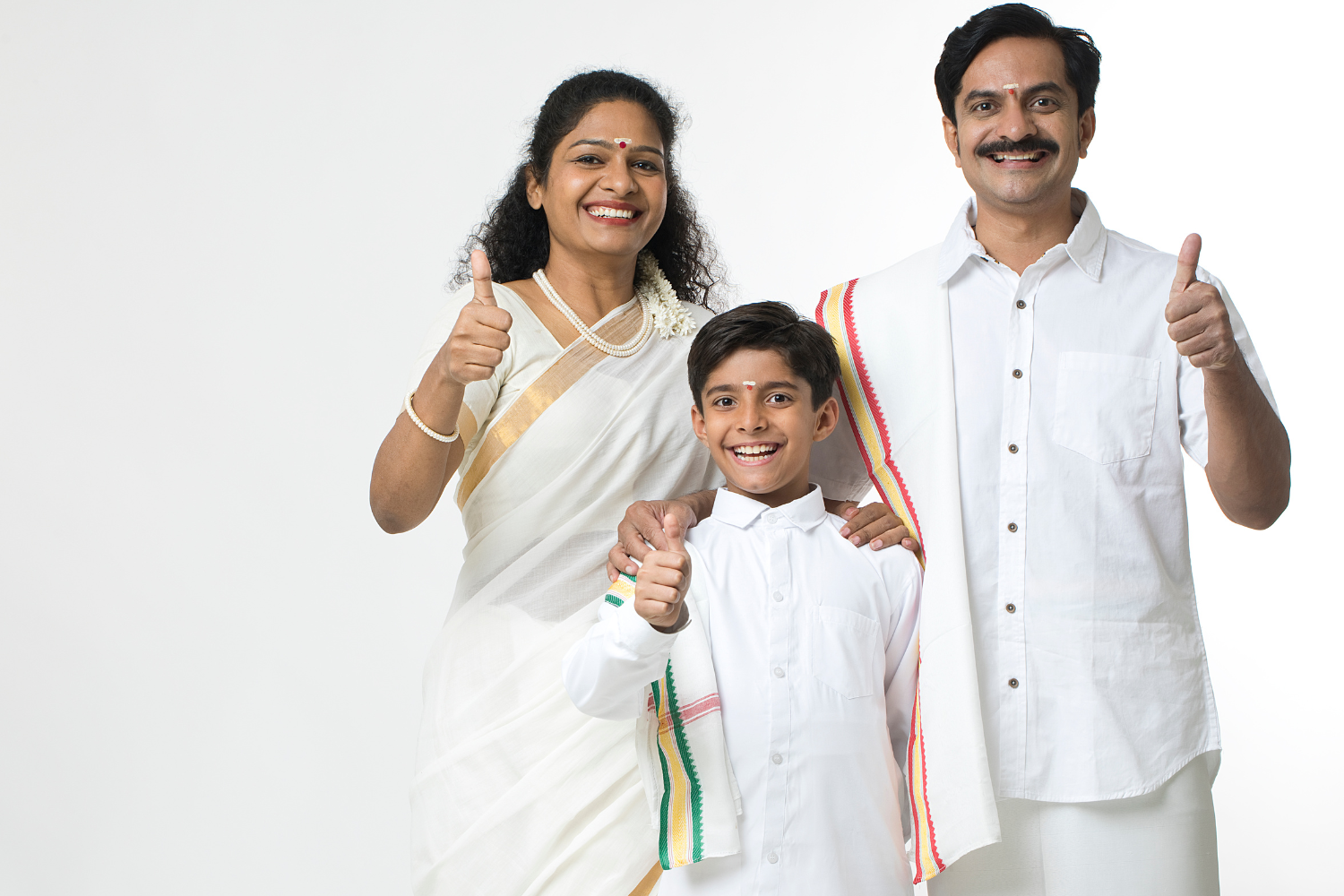
For men in the Davanagere district, the traditional attire consists of a dhoti and panche, along with a shirt or Kurta.
The dhotis, often made of comfortable cotton fabrics, are tied in a unique style, highlighting the district’s cultural heritage. Paired with a simple shirt or a more formal Kurta, this traditional ensemble exudes a sense of elegance and simplicity.
Men may also wear the Angavastram, adding a touch of grace to their attire.
Davanagere district’s Karnataka traditional dress symbolizes the region’s rich cultural legacy and the pride its people take in their customs.
As festivals and occasions fill the air with celebration, the residents of Davanagere continue to cherish their traditional attire.
14. Dharwad
Dharwad district in Northern Karnataka stands as a cultural hub with a rich tapestry of history and traditions.
Known for its contributions to literature, music, and arts, Dharwad has a distinct identity that is reflected in its traditional attire.
Traditional Dress of Women in Dharwad
In Dharwad, women adore the timeless beauty of traditional cotton sarees.
Renowned for their vibrant colors, intricate patterns, and lightweight texture, these sarees are comfortable for daily wear. Adorned with artistic borders and designs, the Dharwad cotton saree perfectly captures the essence of the district’s cultural heritage.
Women often complement their attire with colorful bangles, earrings, and intricately designed necklaces, adding a touch of grace to their ensemble.
Traditional Dress of Men in Dharwad
For men in Dharwad, their traditional dress is the simple yet sophisticated dhoti. Paired with a Kurta or a shirt, the dhoti reflects the region’s cultural roots and is a common attire during religious and cultural festivities.
Men may also don a colorful turban, especially during special occasions, which adds a regal flair to their appearance.
The traditional attire of men in Dharwad symbolizes elegance and the preservation of their cultural heritage.
Dharwad district’s Karnataka traditional dress is a celebration of the region’s cultural pride and artistic splendor. Dharwad’s traditional attire is a timeless legacy passed down through generations, one that continues to inspire and unite the people in this cultural haven of Karnataka.
15. Gadag: Karnataka Traditional Dress
Gadag district in Northern Karnataka holds a significant place in the state’s cultural heritage.
Known for its architectural marvels and historical monuments, Gadag is an amalgamation of cultural diversity and traditional values.
The people of Gadag take immense pride in preserving their age-old customs, and their traditional attire is a testament to their rich cultural identity.
Traditional Dress of Women in Gadag
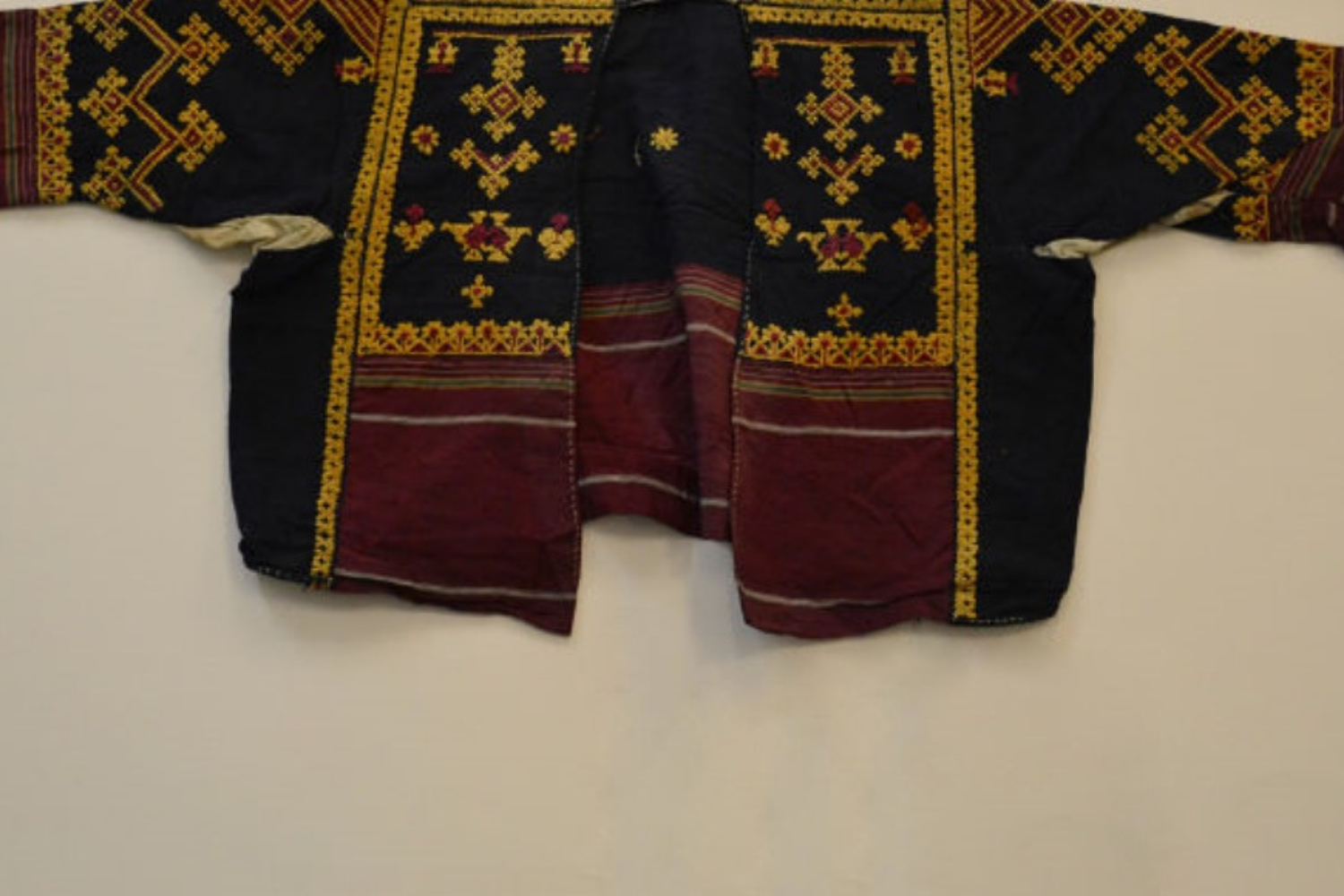
In Gadag district, women adorn the captivating Kasuti embroidered sarees, which are a hallmark of Karnataka’s textile heritage.
The Kasuti embroidery, with its intricate patterns and vibrant colors, elevates the elegance of the sarees, making them a prized possession for women in the region.
These sarees are not just a reflection of artistic finesse but also hold sentimental value, passed down through generations as cherished heirlooms.
Traditional Dress of Men in Gadag
For men in Gadag, the traditional attire is the crisp and dignified dhoti and panche. Skillfully draped around the waist, the dhoti, typically made of cotton, exudes a sense of simplicity and cultural pride.
Paired with a Kurta or a shirt, the traditional dhoti completes the ensemble, making it a timeless and comfortable attire, especially during festivals and auspicious occasions.
Gadag district, with its rich cultural heritage, celebrates its traditions through the distinct dressing styles of its people. Their traditional dress symbolizes the deep-rooted cultural significance and, most importantly, the pride that the people of Gadag hold in their hearts.
16. Kalaburagi
Nestled in the northern region of Karnataka, Kalaburagi district, formerly known as Gulbarga. It is a cultural gem that has witnessed the influence of several dynasties over the centuries.
With its historical significance and vibrant traditions, Kalaburagi holds a special place in the heart of Karnataka.
Traditional Dress of Women in Kalaburagi
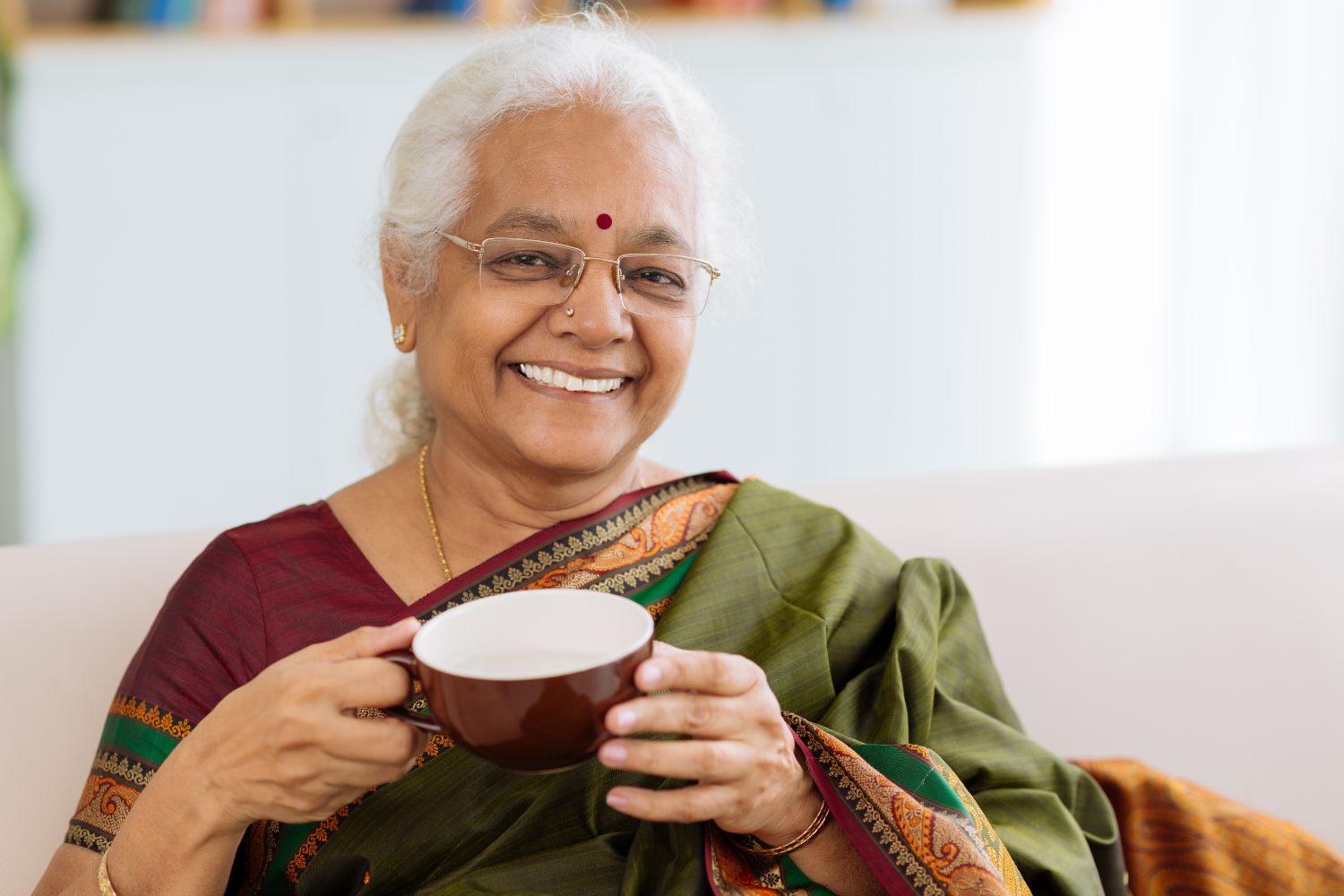
In Kalaburagi district, women don the enchanting Ilkal sarees, which hold a distinct identity in Karnataka traditional dress repertoire.
These sarees are characterized by their simple yet alluring designs, showcasing vibrant colors and intricate patterns.
The beauty of the Ilkal saree lies in its unique pallu, adorned with traditional motifs that narrate the stories of the region’s cultural heritage.
Women pair the saree with exquisite gold or silver jewelry, enhancing the grace and elegance of their attire.
The Ilkal saree not only epitomizes the cultural identity of Kalaburagi but also celebrates the artistry of local weavers who weave tales of tradition through every thread.
Traditional Dress of Men in Kalaburagi
Men in Kalaburagi district often wear the dhoti and panche. The panche is typically paired with a shirt or Kurta, completing the traditional ensemble.
To add a touch of elegance and cultural significance, men adorn themselves with vibrant turbans called “Pagadis” or “Saafa.” The pagadis, with their unique folding patterns and colors, symbolize the social and religious occasions celebrated in the district.
The combination of the panche and pagadi showcases the enduring spirit of tradition and pride that is deeply ingrained in the hearts of Kalaburagi’s men.
Kalaburagi district’s Karnataka traditional dress weaves a captivating narrative of Karnataka’s cultural heritage. Through its rich tapestry of colors, patterns, and designs, Kalaburagi’s cultural elegance continues to thrive. It is preserving the essence of the region’s glorious past and embracing the promise of a vibrant future.
17. Hassan
Hassan district is a land of natural beauty and historical significance. It derives its name from the presiding deity, Goddess “Hasanamba.”
Known for its enchanting landscapes, ancient temples, and rich architectural wonders, Hassan holds a special place in Karnataka’s cultural tapestry.
Traditional Dress of Women in Hassan
In Hassan district, women gracefully adorn the iconic Mysore silk sarees, renowned for their exquisite craftsmanship and luxurious feel.
These sarees boast vibrant colors, intricate zari borders, and delicate motifs that reflect the artistic prowess of local weavers. The Mysore silk sarees hold a special cultural significance, often worn during religious ceremonies, festivals, and weddings.
Complementing the attire, women embellish themselves with traditional jewelry, such as the Kempu necklace, the Kasina Sara, and the Mysore’s distinctive gold bangles.
Traditional Dress of Men in Hassan
For men in Hassan district, the traditional attire is the dignified dhoti and panche. They are paired with a Kurta or a shirt.
This attire reflects simplicity and cultural roots, and it is commonly worn during auspicious occasions and cultural celebrations.
To complete the look, men often wear headgear, a turban, or a shalya (a traditional scarf), adding a touch of elegance and respect.
Hassan district’s Karnataka traditional dress celebrates the cultural heritage and artistic brilliance of Karnataka. The district’s traditional attire continues to thrive, exuding elegance and cultural significance in every thread and weave.
18. Haveri
Haveri is a district that brims with cultural significance and historical charm. Known for its ancient temples, intricate carvings, and vibrant festivals, Haveri proudly upholds its rich heritage.
The traditional attire of Haveri reflects the deep-rooted traditions and artistic flair of its people, making it a delight to explore.
Traditional Dress of Women in Haveri
In the Haveri district, women don elegant cotton sarees that exude simplicity and grace. Often adorned with subtle but intricate designs, these sarees showcase the region’s artistic finesse.
Women pair their sarees with traditional jewelry, such as the Patola necklace and the Kolusu anklets, adding a touch of tradition and cultural pride to their attire.
Traditional Dress of Men in Haveri
Men in the Haveri district embrace the timeless charm of the traditional dhoti and panche. Worn in a manner that is both comfortable and dignified, the dhoti complements the district’s warm climate and reflects the simplicity of rural life.
Men often pair the dhoti with a shirt or Kurta, completing their attire with a sense of cultural belonging.
Haveri district’s Karnataka traditional dress symbolizes the harmony between cultural heritage and contemporary living.
The traditional attire of the people of Haveri captures the essence of Haveri’s rich cultural tapestry.It stands as a testament to the timeless traditions that continue to thrive in this picturesque part of Karnataka.
19. Kodagu
Nestled amidst the lush Western Ghats, Kodagu, often referred to as Coorg, is a picturesque district in Karnataka renowned for its breathtaking landscapes and cultural richness.
The district has a distinct identity, celebrated for its vibrant festivals, unique customs, and warm hospitality.
Traditional Dress of Women in Kodagu
The Karnataka traditional dress of women in Kodagu is the exquisite Kodagu-style saree, also known as the Coorgi Pudava.
Characterized by their unique pleats and adorned with vibrant colors and bold borders. These sarees reflect the region’s rich cultural heritage.
The Coorgi Pudava is woven from fine cotton, silk, or a blend of both, adding an element of comfort to its inherent beauty.
The sarees are meticulously draped in the Kodava style, showcasing the craftsmanship of the region.
Women pair their sarees with traditional jewelry like the Kumkuma Kuchu, a distinctive ornament worn on the pallu, and the Pathak, an intricately designed necklace. Adorned in the Coorgi Pudava, women exude elegance and grace, embodying the cultural essence of Kodagu.
Traditional Dress of Men in Kodagu

For men in Kodagu, their traditional dress is the Kupya, a knee-length coat that they often wear over a shirt or a Kurta.
Made from silk and intricately embroidered with unique designs, the Kupya reflects the traditional craftsmanship of the region. Coorgi men pair the Kupya with the traditional dhoti. They drape it in a distinct style to create a regal and dignified look.
The ensemble is completed with the distinctive Coorgi turban called the Peta, often made from silk and adorned with elegant patterns.
This traditional attire showcases the valor and pride of the Coorgi men, symbolizing their strong cultural identity.
In Kodagu, the traditional attire serves as a timeless expression of the region’s identity. It continues to be an integral part of their celebrations, festivals, and daily lives, ensuring that the cultural legacy remains alive and vibrant.
20. Kolar
Kolar district, or Kolara as it is traditionally known, is a region in Karnataka that exudes cultural significance.
With a glorious past that dates back to ancient times, this district has witnessed the rise and fall of empires, leaving a profound impact on its cultural heritage.
Traditional Dress of Women in Kolar
In the Kolar district, women often embrace the elegant charm of the traditional silk sarees.
These sarees, known for their exquisite craftsmanship, boast a delightful interplay of vibrant colors and intricate designs. The drapes gracefully hug the women’s figures, making them a symbol of grace and sophistication. The artistic Pallus and stunning borders add an element of opulence to the attire.
Women further enhance their look with traditional jewelry, such as the Kempu necklace, the Pichai Malai, and the Mango Haram.
Adorning themselves with these culturally significant pieces, Kolar’s women carry the legacy of their ancestors with pride and dignity.
Traditional Dress of Men in Kolar
In the Kolar district, you can often see men donning the traditional dhoti and panche, which they pair with a simple yet elegant Kurta.
The crisp and understated dhoti, usually in white or cream, symbolizes purity and simplicity. The Kurta complements the dhoti perfectly, giving men a dignified and traditional appearance.
The men of Kolar showcase a blend of modesty and cultural pride through their traditional attire as they go about their daily lives or participate in festive celebrations.
Kolar district’s traditional dress is a beautiful reflection of its cultural heritage.
21. Koppala
Koppala district, located in Northern Karnataka, is a land steeped in history and culture. Known for its ancient temples, archaeological sites, and rich heritage, Koppala has preserved its cultural roots with immense pride.
The district’s traditional attire reflects the essence of its people and their connection to their historical past.
Traditional Dress of Women in Koppala
Women in the Koppala district exude grace and elegance in their traditional attire. They predominantly wear exquisite cotton sarees, which are adorned with intricate patterns and vibrant colors.
These sarees are woven with immense skill and often feature traditional motifs that have been passed down through generations. Draped in the traditional style, the sarees showcase the cultural legacy of Koppala and evoke a sense of timeless beauty.
Complementing their sarees, women adorn themselves with traditional jewelry, such as intricately crafted gold necklaces, bangles, and earrings. The jewelry pieces often carry cultural significance and add a touch of finesse to the overall attire.
Women in Koppala take immense pride in their traditional dress. It forms an integral part of their identity during festivals, weddings, and other auspicious occasions.
Traditional Dress of Men in Koppala
Men in the Koppala district also embrace their cultural heritage with their distinctive traditional attire. They typically wear the dhoti and panche. The dhoti comes in various colors and fabrics. Men often choose ones that suit the occasion and their style. To complete their ensemble, men wear a Kurta or a shirt that complements the dhoti.
The combination not only offers comfort but also reflects a sense of tradition and respect.
During traditional ceremonies and religious events, men in Koppala proudly sport this attire. Symbolizing their connection to their ancestral customs and values.
The Koppala district’s traditional dress reflects the region’s cultural heritage. It serves as a symbol of identity and pride for its people.
Koppala’s traditional attire, carrying the legacy of Karnataka’s cultural magnificence, continues to be cherished and celebrated.
22. Mandya
Mandya district, in southern Karnataka, is renowned for its lush green landscapes and fertile plains, making it a prominent agricultural region.
The district holds immense cultural significance as it is home to various traditional festivals, folk arts, and age-old rituals that are deeply rooted in the hearts of its people.
Traditional Dress of Women in Mandya
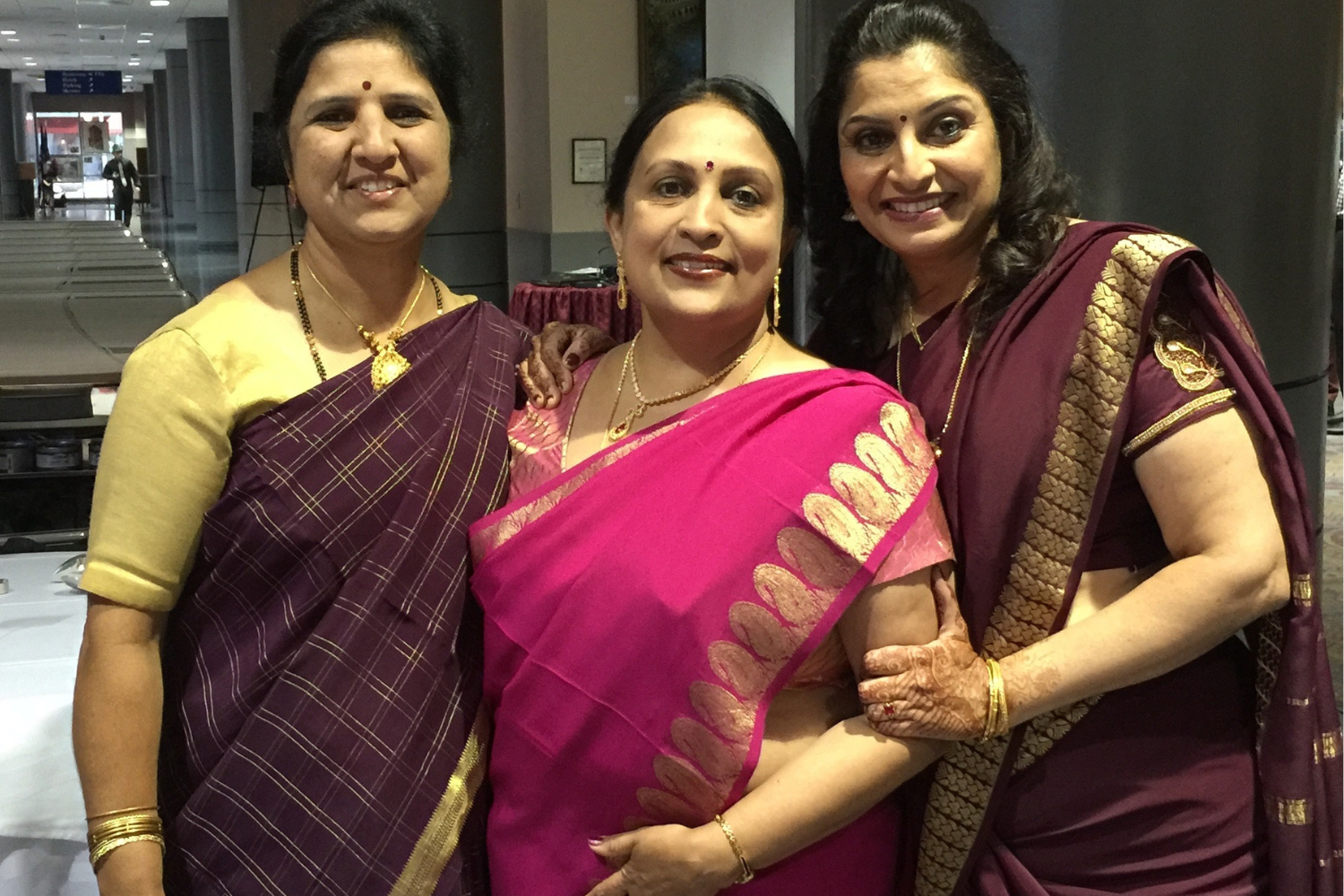
In the Mandya district, women prefer to drape themselves in elegant Mysore silk sarees, renowned for their soft texture and vibrant colors.
The Mysore silk sarees are often adorned with intricate zari work and mesmerizing patterns. These sarees hold a special place in the hearts of Mandya’s women and are considered a symbol of cultural pride.
To complement their look, women in Mandya often adorn themselves with traditional jewelry like the “Mangalsutra,” a sacred necklace, and the “Pacchi Haram,” a long necklace.
The women further enhance their attire with Jasmine flowers, which they beautifully adorn in their hair, adding a touch of elegance and freshness to their look.
Traditional Dress of Men in Mandya
For men in the Mandya district, the Karnataka traditional dress primarily comprises a dhoti and panche. It is worn along with a Kurta or a shirt.
Men often complete their attire with a traditional “Angavastram,” which adds an aura of grace to their appearance.
The district of Mandya is renowned for its unique and iconic headgear known as the “Mysore Peta“.
The Mysuru Peta is one of the most iconic and regal headgear in Karnataka’s traditional dress repertoire. This traditional turban is a symbol of honor and dignity and is worn on special occasions and formal events.
The Mysuru Peta is handcrafted with precision and comes in various colors, with the most prominent one being the royal deep red, adorned with a brooch-like embellishment called the “Jari.”
Wearing the Mysore Peta not only reflects the cultural pride of the district but also embodies the regal history of Mysore (Mysuru), the city from which it derives its name.
In the heart of Mandya district, the Karnataka traditional dress of women and men weaves a beautiful tapestry of heritage and cultural significance.
As Mandya’s people continue to cherish and pass down these sartorial traditions through generations, the district’s cultural identity remains eternally adorned in timeless elegance.
23. Mysuru
Mysuru or Mysore, is a district steeped in history and cultural grandeur. Renowned for its regal heritage and majestic palaces, Mysuru has preserved its traditions and customs over the centuries.
The district is the epitome of art, dance, music, and, of course, its splendid traditional attire.
Traditional Dress of Women in Mysuru
In Mysuru, women embrace the timeless elegance of the Mysore silk saree.
These sarees are renowned for their lustrous texture, vibrant colors, and intricate Zari or golden threadwork. The exquisite pallu and elaborate borders add a touch of sophistication to the attire.
Women often pair their sarees with traditional jewelry, such as the Kasina Sara, Mysore Pota, and Kempu necklace, enhancing their graceful look.
The Mysore silk saree has become a symbol of pride and cultural identity for women in this district, and it holds a special place in various auspicious occasions and celebrations.
Traditional Dress of Men in Mysuru
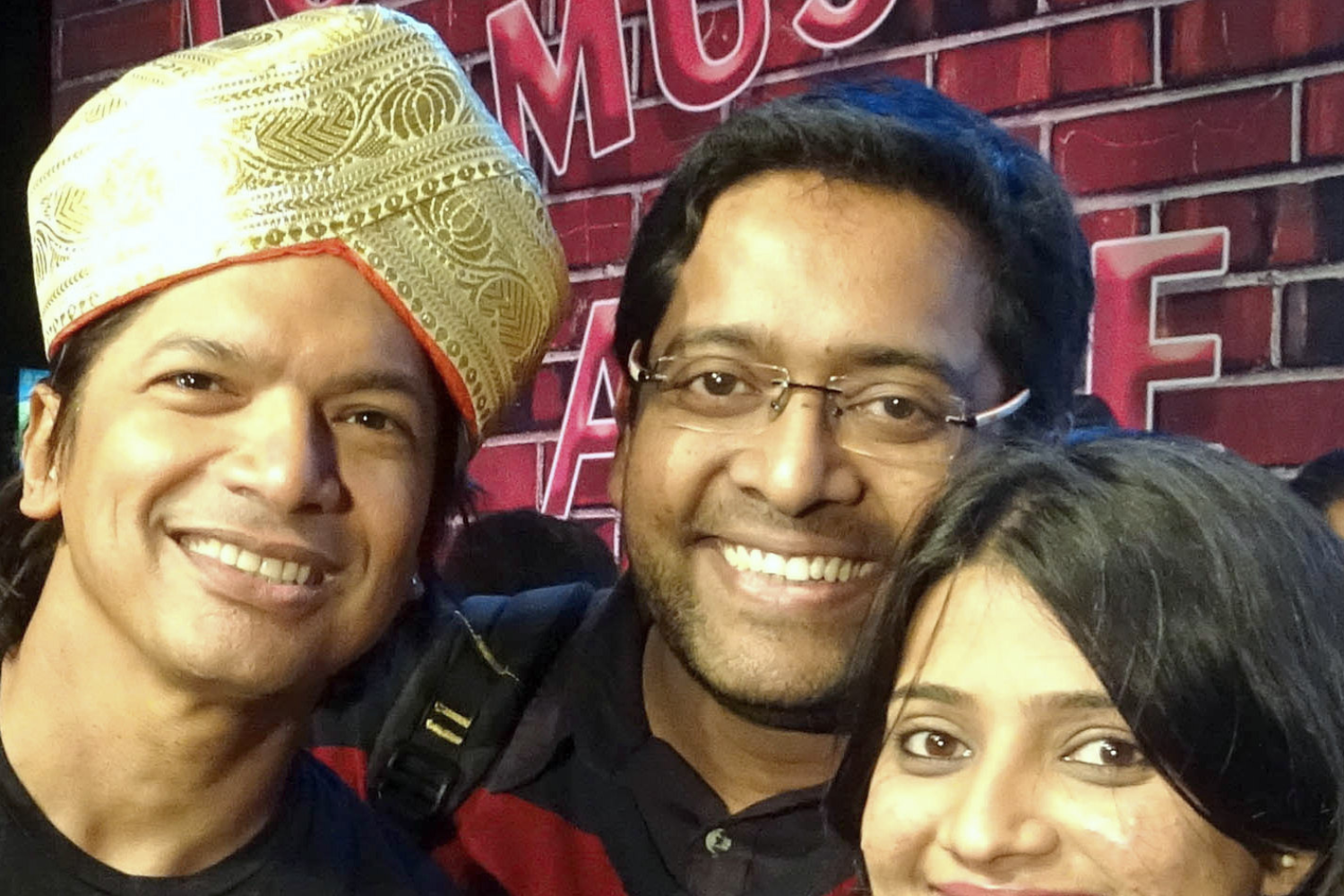
Image Credits: Bodhisattva Dasgupta
Men in Mysuru exude a sense of regal charm with their traditional attire. The dhoti, often in white or cream color, is a staple for men in this district. It is draped elegantly, reflecting a blend of simplicity and sophistication.
Paired with a Kurta or a shirt, the traditional dhoti completes the quintessential Mysorean men’s look. Men may also wear the traditional Mysore Peta, a silk turban, which symbolizes honor, respect, and cultural heritage.
Mysuru district is a treasure trove of cultural magnificence, and its traditional dress is an integral part of its rich heritage.
24. Raichur
Raichur or Raichuru district holds a significant place in the state’s cultural fabric.
Known for its historical heritage and breathtaking architecture, this district has been a melting pot of diverse traditions and customs over the centuries.
Traditional Dress of Women in Raichur
In Raichur district, women don a graceful and vibrant traditional attire that reflects the district’s cultural splendor. The women here often wear sarees, typically made of silk or cotton, adorned with intricate patterns and motifs.
These sarees come in an array of colors, ranging from deep maroons to bright yellows and rich blues, reflecting the region’s festive and celebratory spirit.
The sarees are usually paired with intricately designed blouses that further enhance the overall look.
Women accessorize their attire with traditional jewelry, such as necklaces, bangles, and earrings, adding a touch of elegance and grace to their appearance.
Traditional Dress of Men in Raichur
Men in the Raichur district exude an aura of regal charm through their traditional attire. The quintessential dress for men here is the dhoti, a piece of unstitched cloth, often woven with fine cotton or silk threads.
Paired with the dhoti, men wear a Kurta, a long tunic-like shirt, often made of cotton or silk. The Kurta can vary in colors and designs, and its simplicity perfectly complements the overall attire.
Men in Raichur might also wear a traditional Angavastram, a piece of cloth draped over their shoulders, signifying a mark of respect and tradition.
Raichur’s traditional attire continues to embody the spirit and elegance of Karnataka’s cultural legacy.
25. Ramanagara
Ramanagara, a picturesque district located in southern Karnataka, is renowned for its mesmerizing landscapes and historical significance.
The district is famous for its association with the iconic Bollywood movie “Sholay,” which was filmed in the rocky hills of Ramanagara.
The region is blessed with a unique blend of natural beauty and cultural heritage, which is also reflected in the traditional dress worn by the locals.
Traditional Dress of Women in Ramanagara
The traditional dress of women in Ramanagara district exudes simplicity and elegance. The women often wear sarees with unique patterns and designs, reflecting the region’s artistic traditions.
The sarees are usually made of comfortable fabrics like cotton or silk, and adorned with intricate embroidery or printed motifs.
The vibrant colors and craftsmanship of these sarees add a touch of grace to the women’s attire, perfectly complementing the scenic beauty of Ramanagara’s landscape.
Traditional Dress of Men in Ramanagara
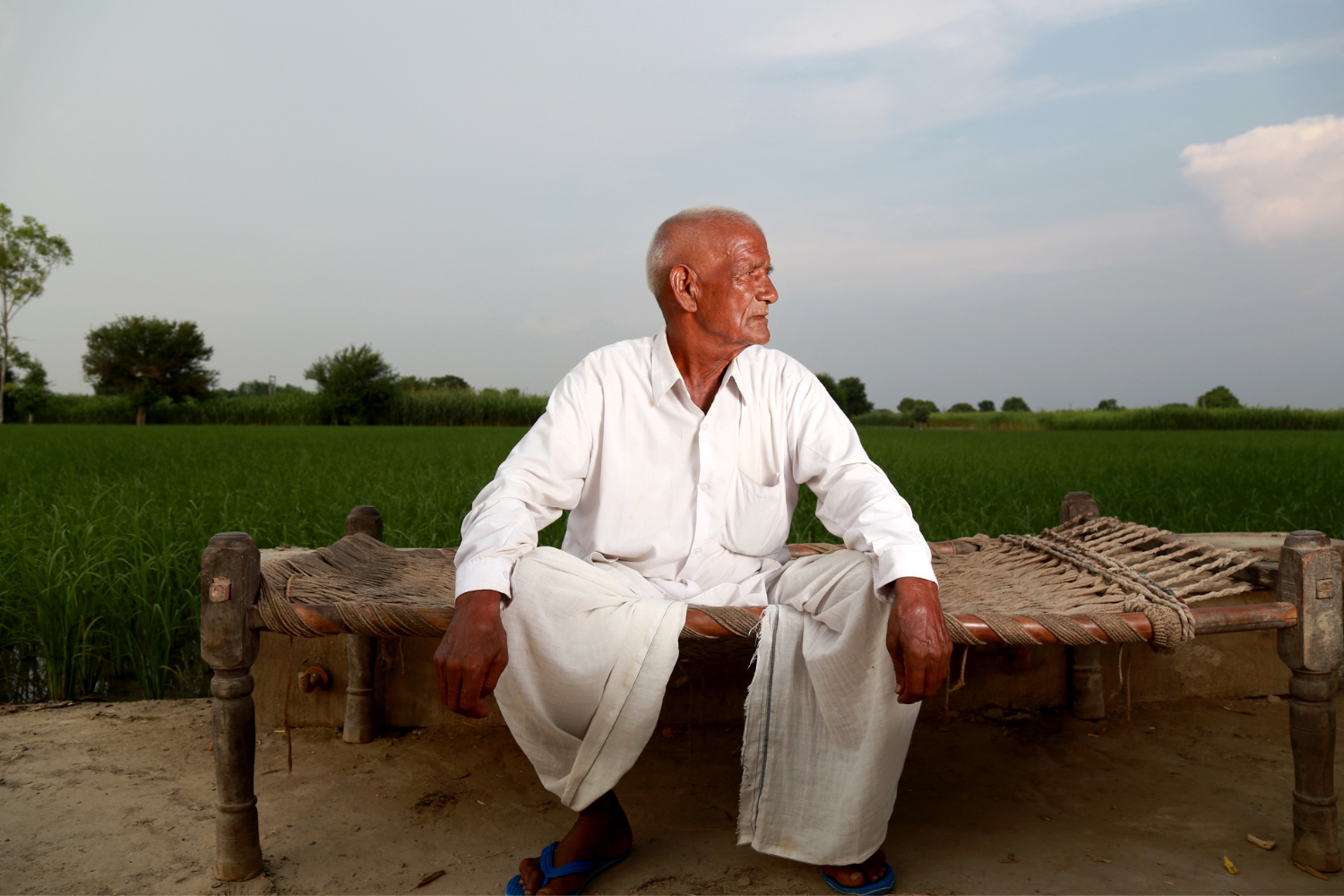
For men in Ramanagara district, the traditional attire embraces the simplicity of rural life. The most common outfit is the dhoti and panche. Men pair the dhoti with a simple shirt or Kurta, symbolizing their strong connection to their cultural roots.
The attire is not only comfortable but also reflects the timeless charm of their Karnataka traditional dress and dressing style in the district.
Ramanagara district’s traditional attire is a reflection of its cultural heritage and natural beauty.
26. Shivamogga
Nestled amidst the Western Ghats, the Shivamogga (Shimoga) district is renowned for its lush green landscapes, ancient temples, and a culture that embraces traditions with great pride.
Located in the heart of Karnataka, this picturesque district holds a special place in the state’s history, making it a treasure trove of cultural heritage.
Traditional Dress of Women in Shivamogga
In Shivamogga district, women don the traditional saree with grace and elegance. The Kasuti saree, adorned with intricate and symmetrical embroidery, is the favored choice among the people of Shivamogga.
These delicate patterns, crafted with precision by local artisans, showcase the rich heritage and artistic finesse of the region.
Women further enhance their attire with traditional jewelry, like the Kempu necklace and the Nakshatra Haara, adding a touch of timeless allure.
Traditional Dress of Men in Shivamogga
The traditional dress of men in Shivamogga is the dhoti and panche. It is a simple yet dignified garment that symbolizes the cultural roots of the district. Paired with a Kurta or a shirt, the men exude a sense of elegance and sophistication
On special occasions and festivals, men may also drape the Angavastram over their shoulders, which serves as a mark of reverence and respect.
In Shivamogga district, traditional attire stands as a living testament to the region’s cultural legacy, symbolizing the pride and deep-rooted traditions that continue to thrive in this enchanting corner of Karnataka.
27. Tumakuru
District Tumakuru, situated in Southern Karnataka, holds immense historical and cultural significance.
The region is known for its association with legendary figures like Sir M. Visvesvaraya and houses several ancient temples, including the famous Siddara Betta. Its rich agricultural heritage and renowned traditional festivals and rituals, deeply ingrained in its cultural fabric, make Tumakuru stand out.
Traditional Dress of Women in Tumakuru
In the Tumakuru district, women cherish their cultural roots through the traditional nine-yard saree, locally known as “Tumakuru Saree.” These sarees are made from lightweight cotton fabric, ideal for the warm climate of the region.
Local weavers characterize the Tumakuru Saree with its distinct and intricate border designs, reflecting their artistic flair.
The women adorn these sarees with traditional jewelry, including colorful bangles, necklaces, and intricately designed earrings.
The graceful draping of the Tumakuru Saree enhances the wearer’s elegance, making it a beloved choice for festivals and special occasions.
Traditional Dress of Men in Tumakuru
For men in Tumakuru, the traditional attire primarily consists of the dhoti and panche, worn along with a simple shirt or Kurta. The dhoti is made from comfortable cotton fabric, allowing ease of movement in the agricultural activities prevalent in the region.
Men often wear a traditional headgear called “Gandu Munde,” a turban-like cloth that adds a touch of dignity to their appearance.
During auspicious occasions or celebrations, men may also opt for the “Mysore Peta,” a traditional silk turban that symbolizes pride and respect.
Tumakuru’s traditional attire exemplifies its cultural heritage but also serves as a reminder of its strong agrarian roots and profound way of life cherished by its people. As the district embraces modernity, their Karnataka traditional dress continues to hold a special place in the hearts of the Tumakuru community, preserving the legacy of their ancestors and the cultural tapestry that weaves their identity.
28. Udupi
Located on the picturesque Malabar Coast, Udupi district is a land of tranquil beaches, age-old temples, and vibrant cultural heritage.
The district is renowned for its spiritual significance, as it is home to the famous Sri Krishna Matha, attracting devotees and tourists alike. The people of Udupi take immense pride in their rich cultural traditions, and their traditional dress beautifully reflects the essence of their land.
Traditional Dress of Women in Udupi
In the Udupi district, women gracefully adorn the traditional Kasuti embroidered sarees, which are a visual marvel with their intricate patterns and vibrant colors. These sarees are a reflection of the local craftsmanship and artistic skills passed down through generations.
The art of Kasuti embroidery holds deep cultural significance, symbolizing prosperity, joy, and celebration.
Women in Udupi pair their sarees with traditional jewelry like the Kempu necklace, Kasina Sara, and the Poojadai.
Traditional Dress of Men in Udupi
The men in the Udupi district embrace the timeless elegance of the traditional panche, a crisp white or cream-colored dhoti. Paired with a well-fitted Kurta or shirt, the attire exudes a sense of traditional charm that resonates with the spirit of Udupi’s heritage.
On special occasions, men may also wear the Angavastram, adding an extra touch of grace to their attire.
Udupi district, with its awe-inspiring spiritual heritage and cultural richness, is a region where tradition weaves itself into every aspect of life, including the attire of its people.
29. Uttara Kannada
District Uttara Kannada, located in the picturesque Western Ghats of Karnataka, is renowned for its pristine beaches, lush forests, and vibrant culture.
The district’s name, “Uttara Kannada,” translates to “North Kannada,” signifying its northern location in the state. Uttara Kannada has a rich history, with evidence of ancient civilizations and notable cultural influences.
Traditional Dress of Women in Uttara Kannada
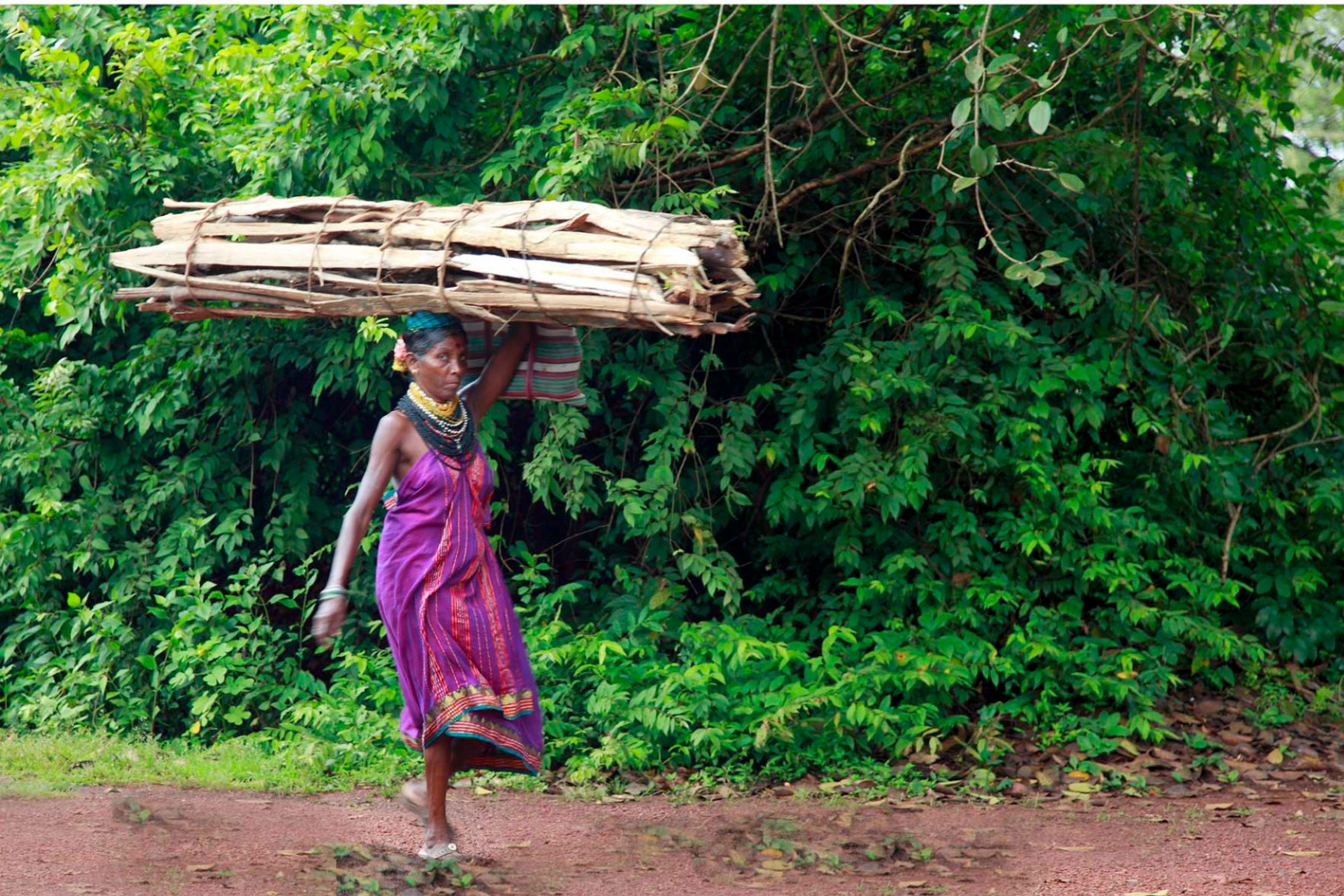
Image credits: Ramnath Bhat
In Uttara Kannada, women proudly embrace the traditional Kasuti sarees, which are a testament to the region’s artistic brilliance. Kasuti embroidery is an intricate form of needlework characterized by intricate patterns and vibrant colors.
The sarees boast a unique charm, with designs often inspired by nature, geometrical shapes, and cultural motifs.
Women gracefully drape these sarees during festive occasions, religious ceremonies, and weddings, adding an aura of elegance and heritage to their presence.
Traditional Dress of Men in Uttara Kannada
For men in Uttara Kannada, the traditional attire centers around dhotis and panche, also known as “Veshti” in some areas.
Men complement their dhotis with shirts or Kurtas, depending on the occasion. During special events, such as festivals or formal gatherings, men may add an angavastram, a cloth draped over the shoulder, which lends an air of sophistication to their appearance.
The Karnataka traditional dress of Uttara Kannada exemplifies the district’s deep-rooted cultural heritage and reflects the artistic talent of its people. As Uttara Kannada continues to embrace its cultural significance, its traditional attire remains a symbol of its identity and legacy.
30. Vijayanagara
Located in the northern part of Karnataka, the Vijayanagara district is steeped in history, tracing its roots back to the glorious Vijayanagara Empire.
Encompassing the ruins of the once-mighty Hampi, a UNESCO World Heritage Site, the district is a treasure trove of ancient temples, architectural marvels, and cultural heritage.
The people of Vijayanagara district take immense pride in preserving their historical legacy, and this is beautifully reflected in their traditional attire.
Traditional Dress of Women in Vijayanagara
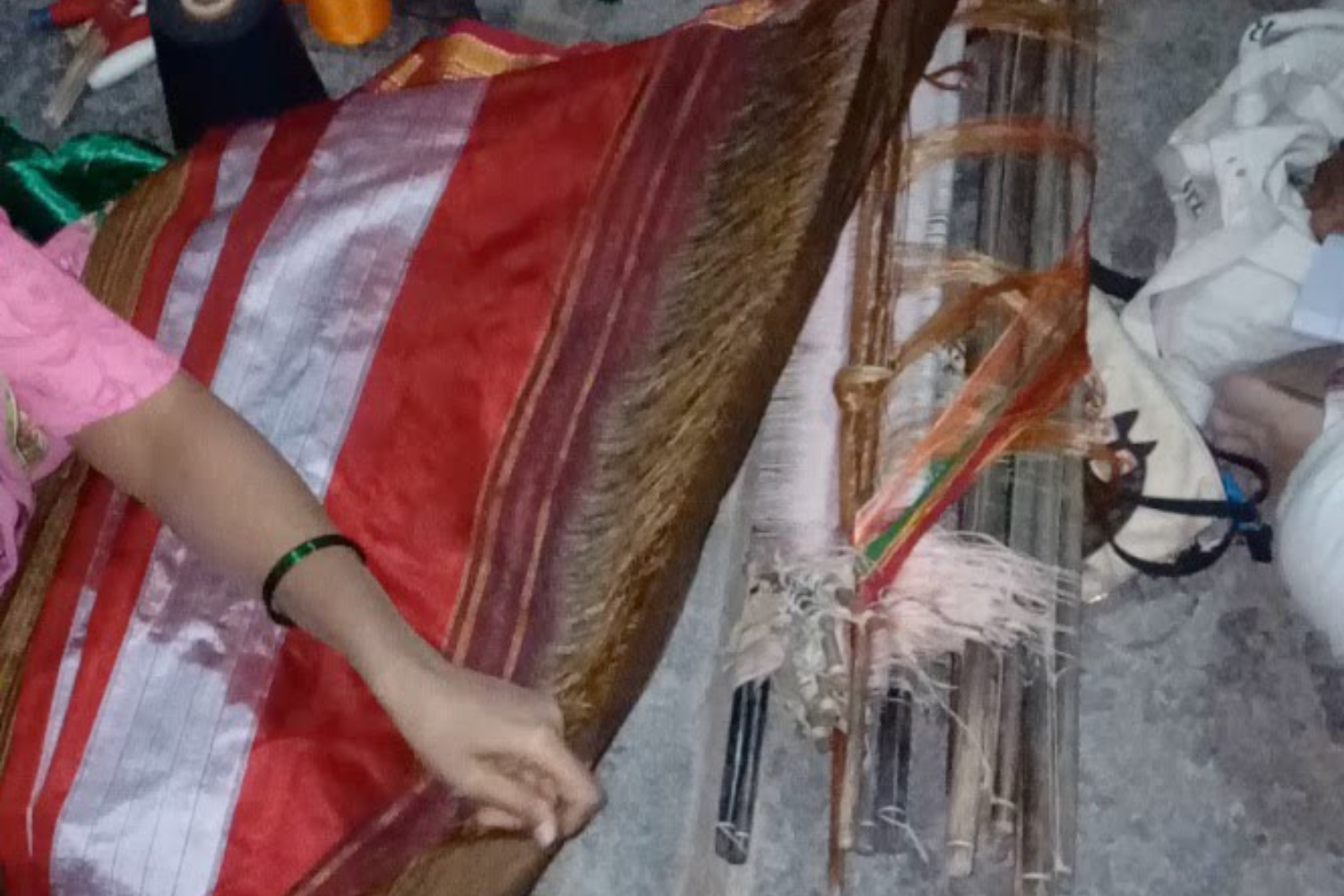
In the Vijayanagara district, women adorn the traditional Ilkal saree, a masterpiece of handloom weaving. The Ilkal saree is renowned for its vibrant colors and unique pallu designs, which often feature vibrant red and white hues.
The borders of the saree are adorned with intricate patterns, including stripes, temple designs, and geometrical shapes.
Women pair the saree with traditional jewelry, such as the Kasina Sara and the Lakshmi Haar, which add a touch of elegance to the ensemble.
The Ilkal saree not only complements the grace of Vijayanagara’s women. It also stands as a symbol of their deep-rooted cultural heritage.
Traditional Dress of Men in Vijayanagara
Men in Vijayanagara district traditionally wear the dhoti paired with a simple shirt or Kurta, completing the attire with a turban or headscarf. The traditional dhoti represents simplicity and humility while signifying the cultural identity of the region.
The men take pride in wearing this attire during religious ceremonies, festivals, and other auspicious occasions, symbolizing their connection with their historical roots.
The people of Vijayanagara keep their traditions alive by wearing their traditional garments, ensuring that their cultural elegance shines brightly even in the modern era.
31. Yadgir
District Yadgir, located in Northeastern Karnataka, is known for its historical importance and cultural diversity.
Once a part of the great Vijayanagara Empire, the district has witnessed the rise and fall of several dynasties. Leaving an indelible mark on its cultural heritage. Today, Yadgir stands as a testament to the region’s illustrious past, reflecting a blend of tradition and modernity in its everyday life.
Traditional Dress of Women in Yadgir
In Yadgir, women embrace the timeless grace of sarees as their traditional attire. The sarees worn by the women of Karnataka, Yadgir often boast vibrant colors and exquisite patterns, reflecting the region’s vibrant culture.
Some of the popular choices include the graceful Ilkal sarees, adorned with traditional Kasuti embroidery, and the rich and colorful Gulbarga sarees.
These traditional garments not only symbolize elegance but also exemplify the pride and cultural identity of the women in Yadgir.
Traditional Dress of Men in Yadgir
For men in Yadgir, the traditional attire revolves around dhotis and panche. This comfortable and dignified attire perfectly aligns with the district’s historical significance and cultural values.
Men pair their dhotis with simple shirts or Kurtas, showcasing a blend of traditional and contemporary fashion. On special occasions and festivals, men don the traditional Angavastram, adding a touch of sophistication to their ensemble.
The traditional dress of the people of Yadgir holds a special place in the hearts of its people, reflecting the district’s rich history and cultural heritage.
Conclusion
The beauty of Karnataka’s traditional dress lies not just in its aesthetic appeal but in the emotions and values it embodies. It reflects the pride, dignity, and elegance of the people who wear it. It carryies forward the torch of tradition while embracing the winds of change.
Let us treasure and preserve this rich legacy, ensuring you that it continues to inspire generations with its timeless charm and evocative stories, connecting us to our past and guiding us into a vibrant future.
FAQs
1. What are the traditional dresses of Karnataka?
Karnataka boasts a rich tapestry of traditional attire. Popular choices for women include Ilkal, Kasuti, and Mysore silk sarees, while men commonly wear Lungi, Dhoti, and Angavastram. Kurtis and Salwar Kameez are also embraced.
2. Which is the most famous dress of Karnataka?
The most famous dress of Karnataka is the traditional attire called “Mysuru silk saree.”
3. What is the tradition of Karnataka?
In Karnataka, people traditionally eat food on banana leaves. During festivals and weddings, men and women wear traditional attire like Dhoti, Kurta, Sari, Mysore Peta, Kanchipuram sarees, and Ilkal sarees.

